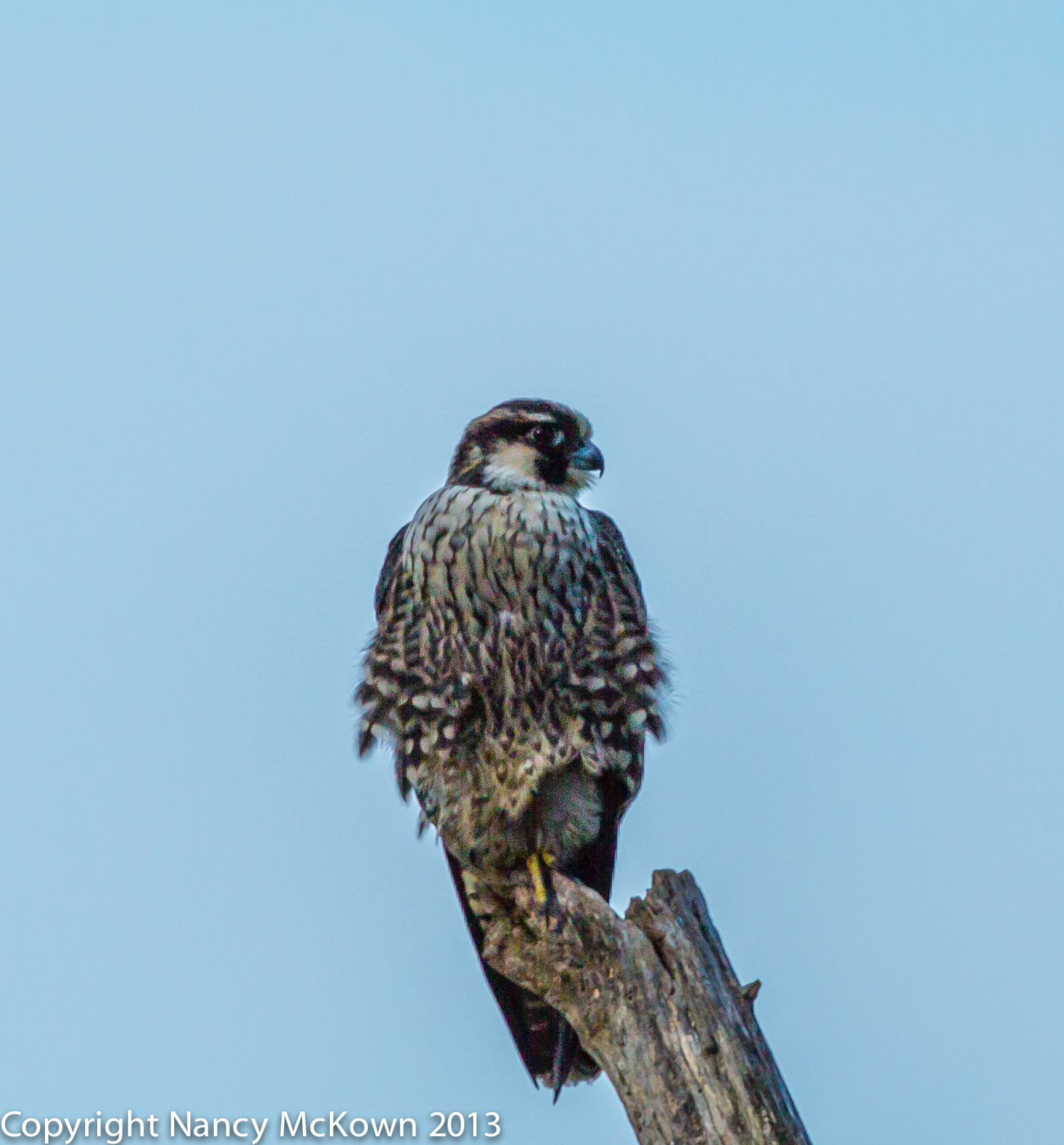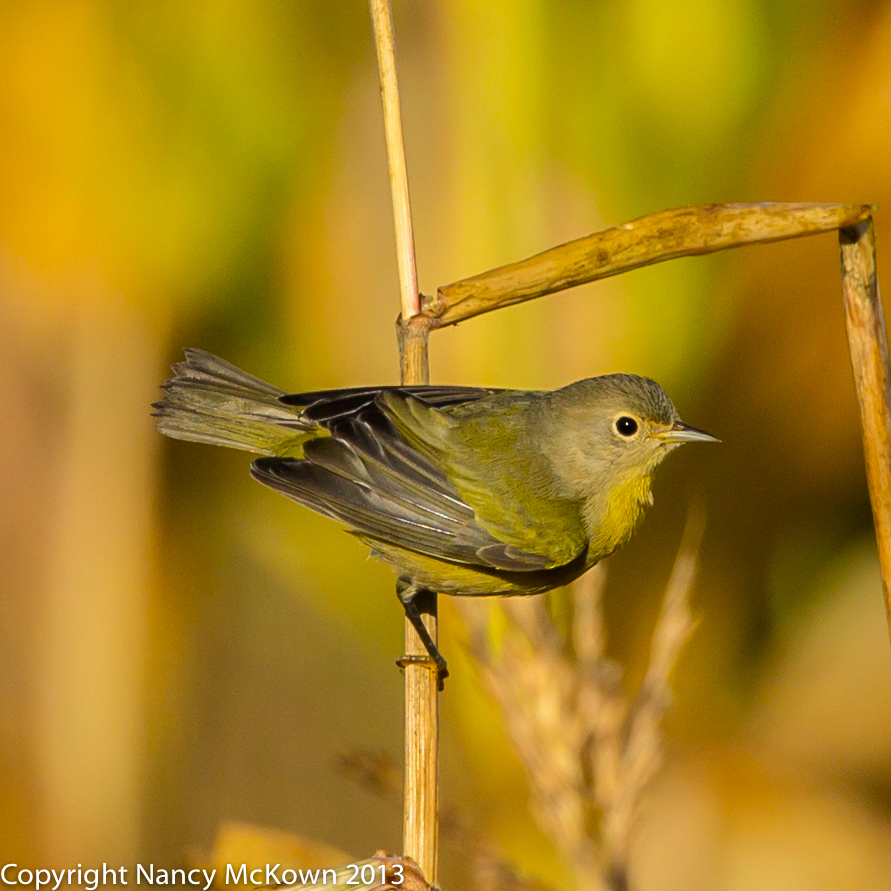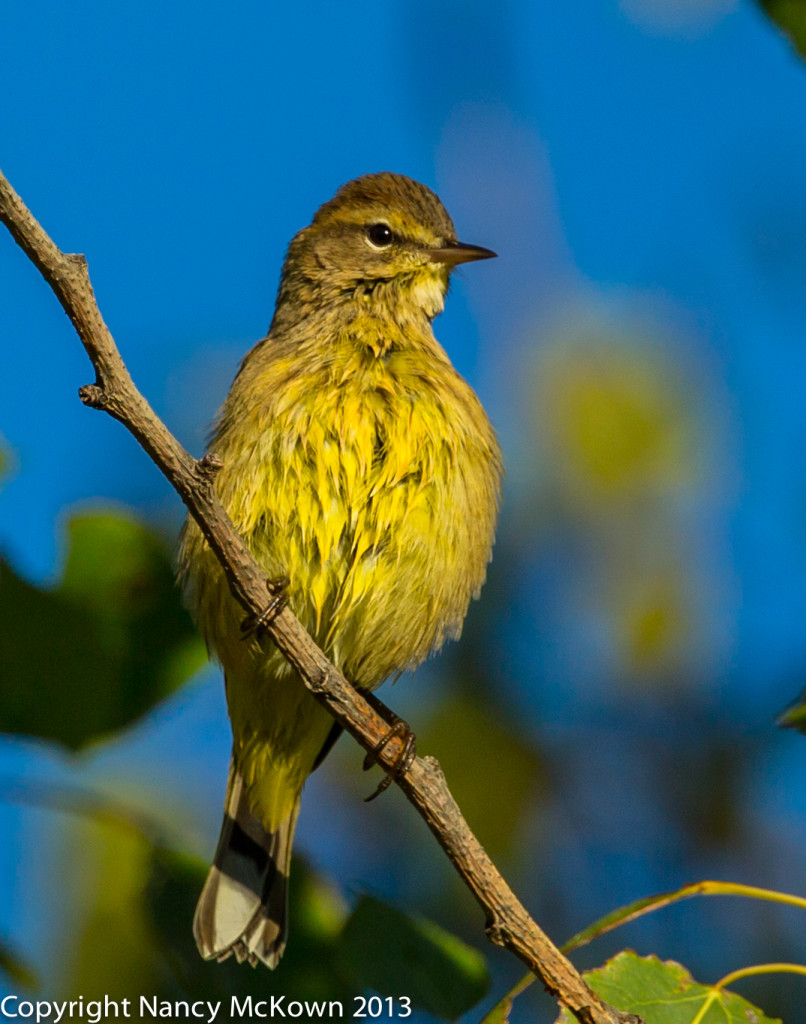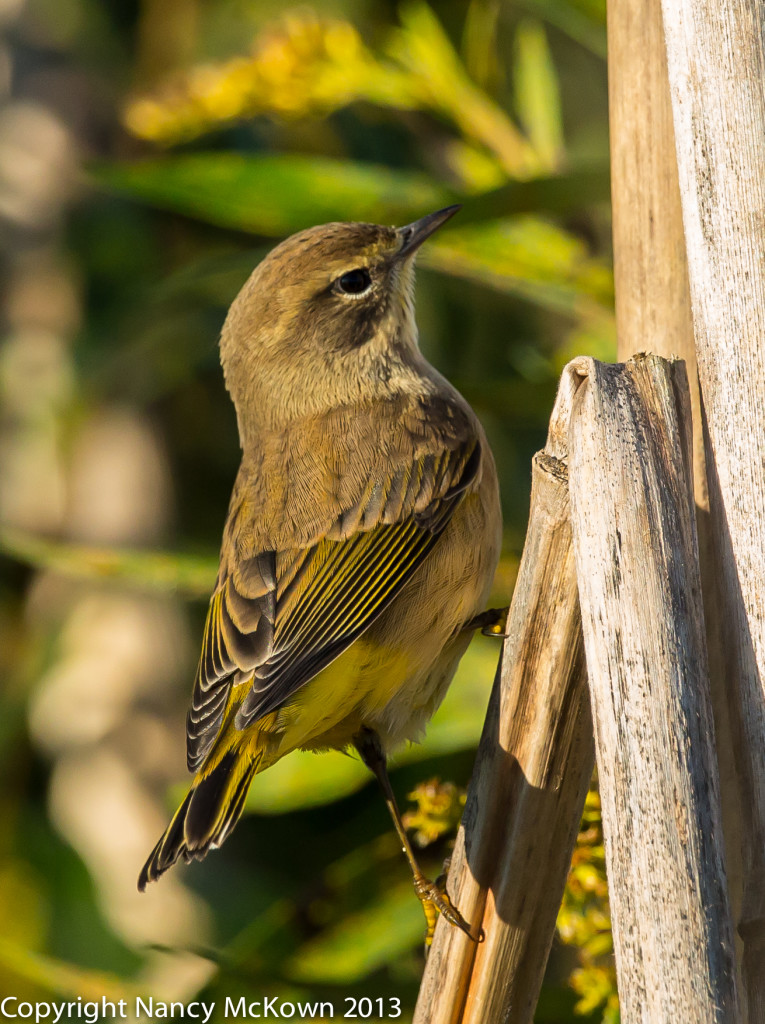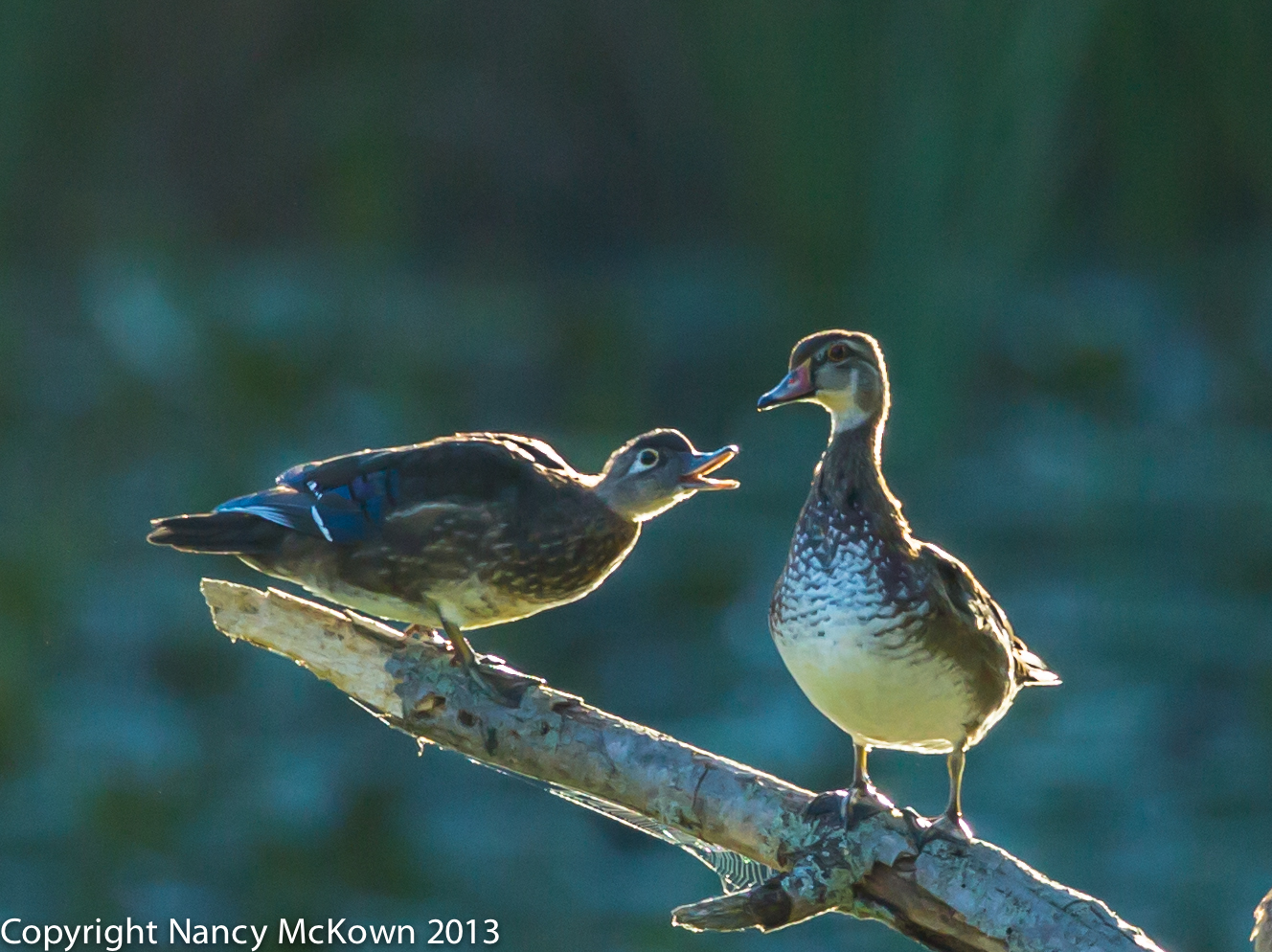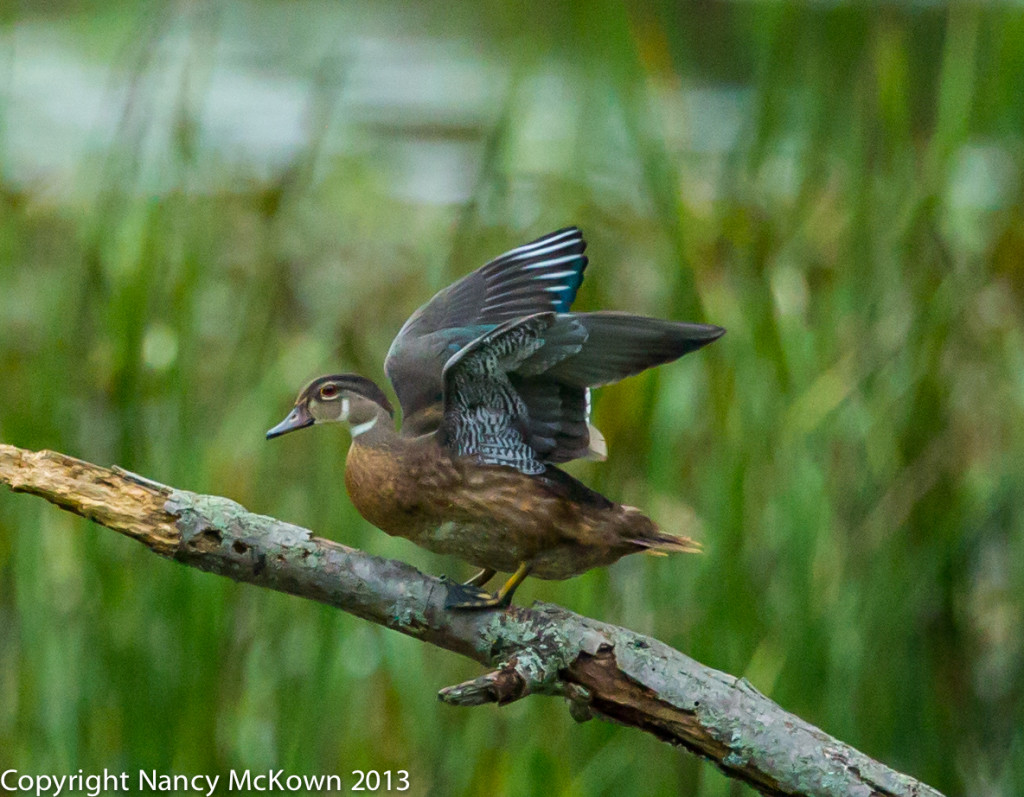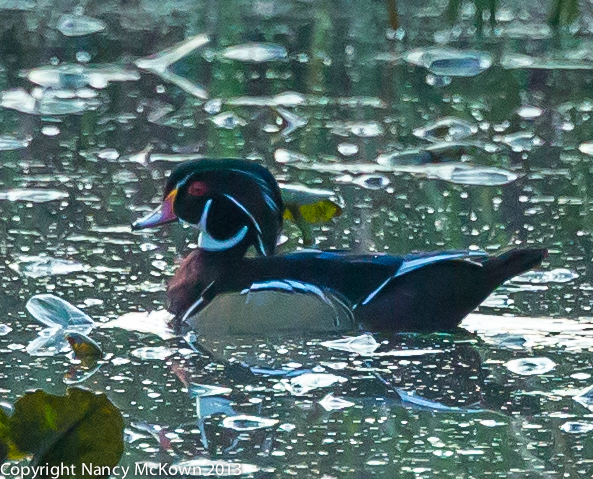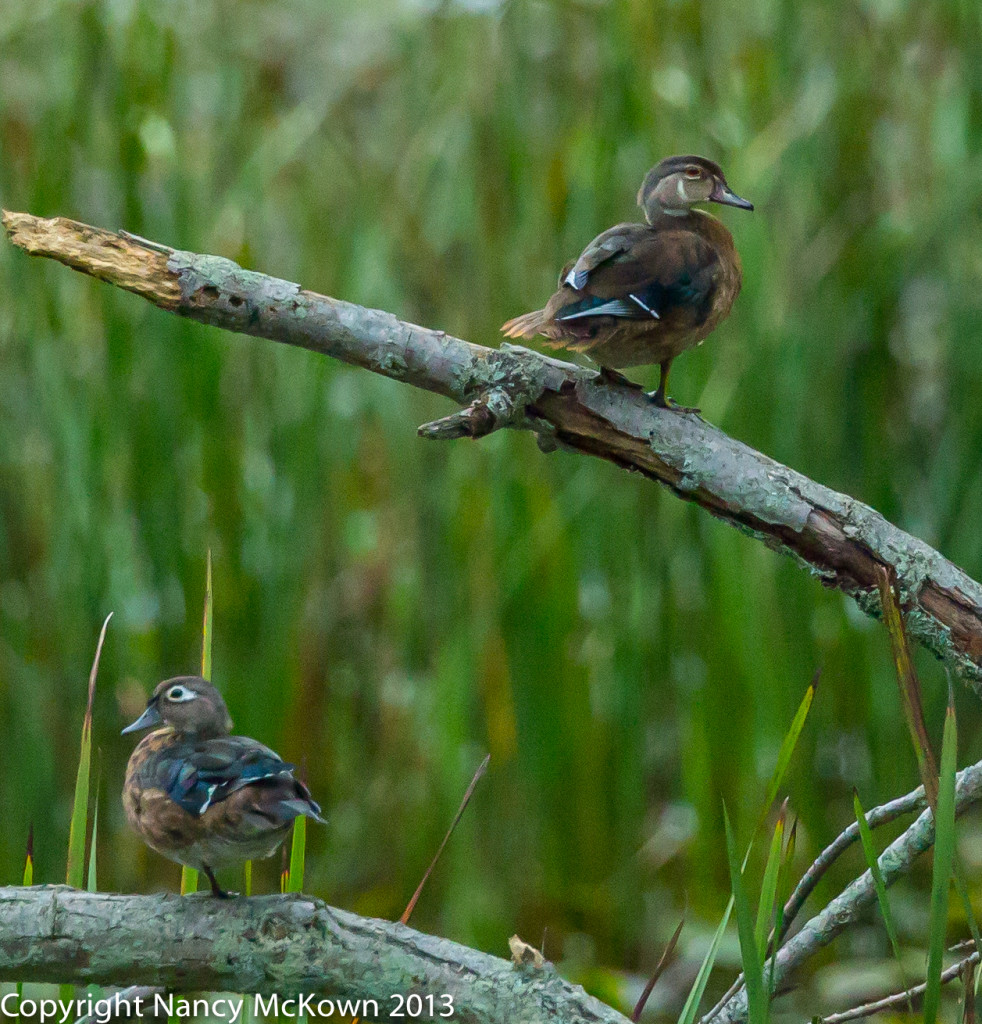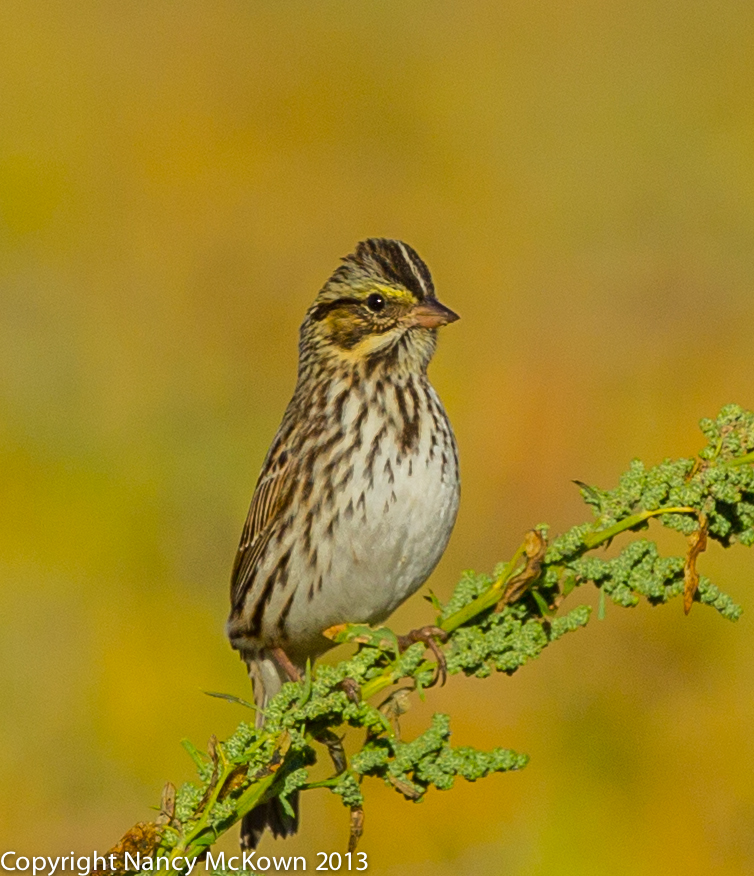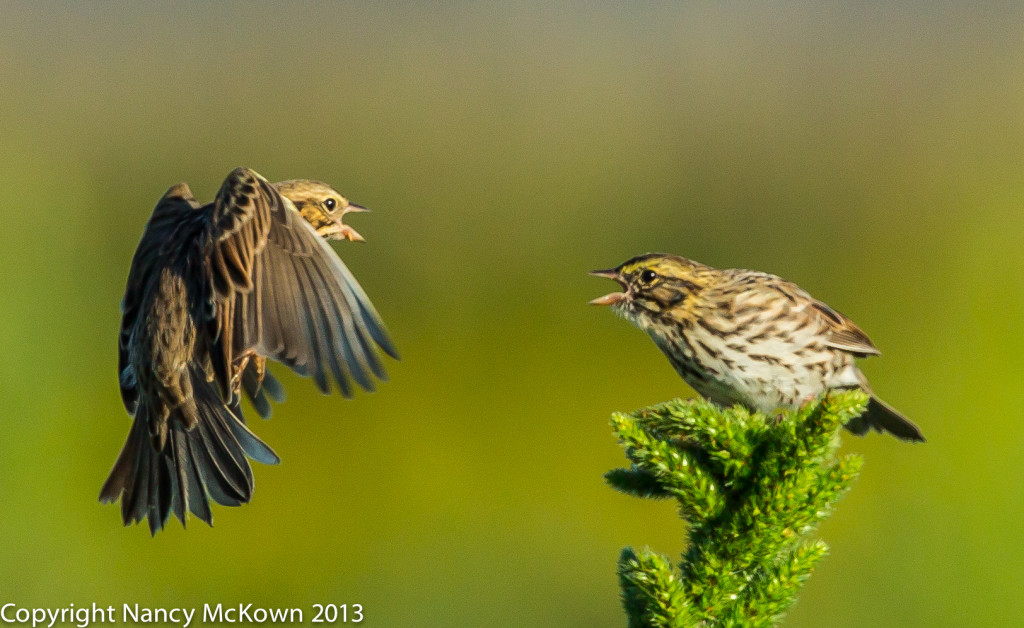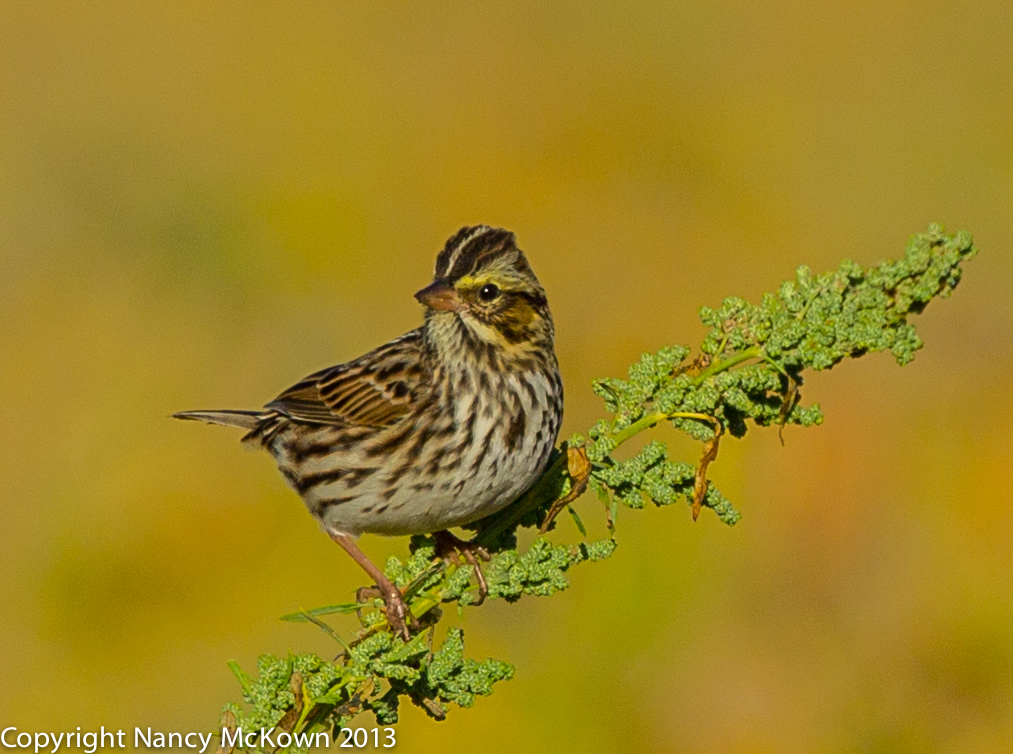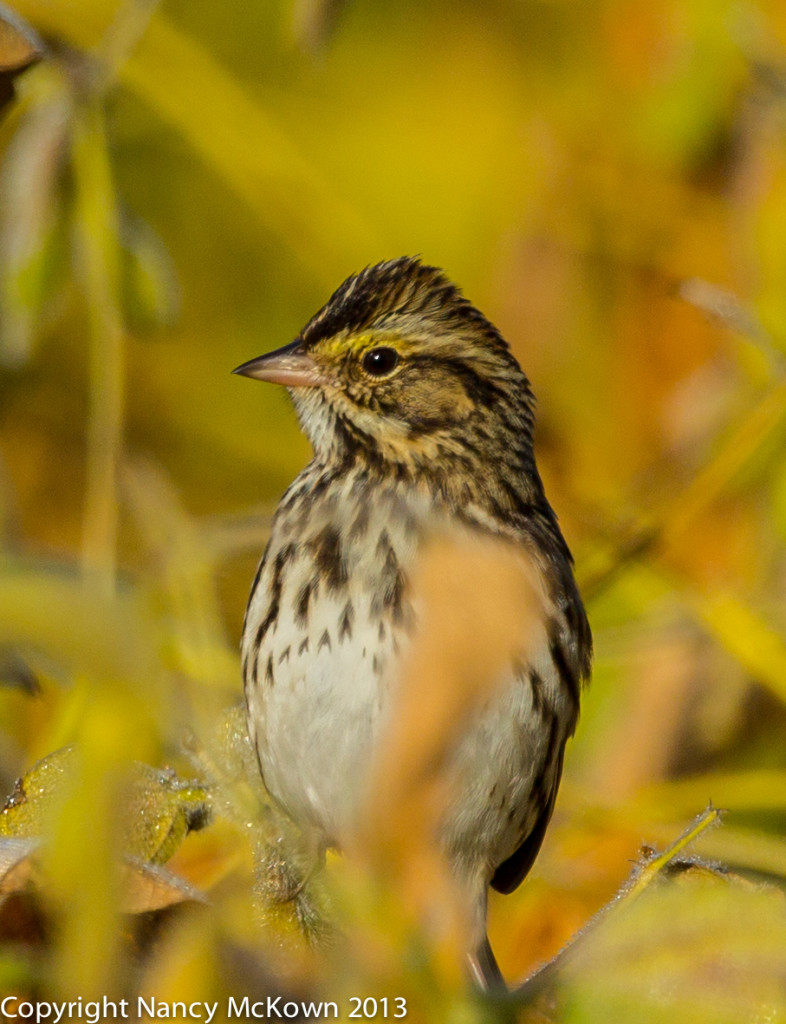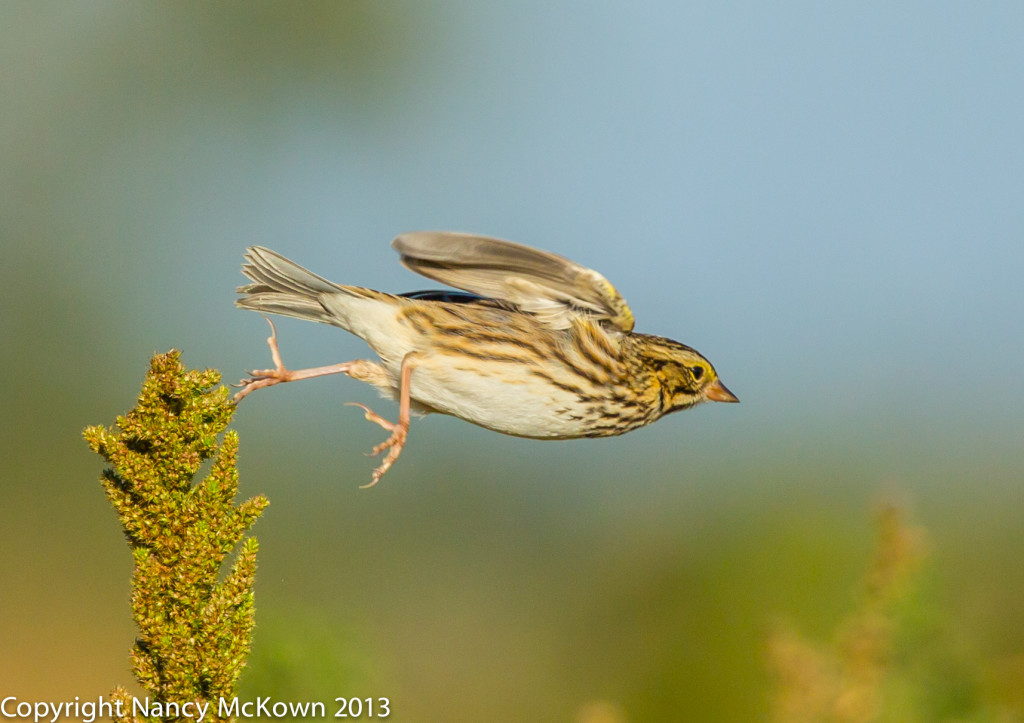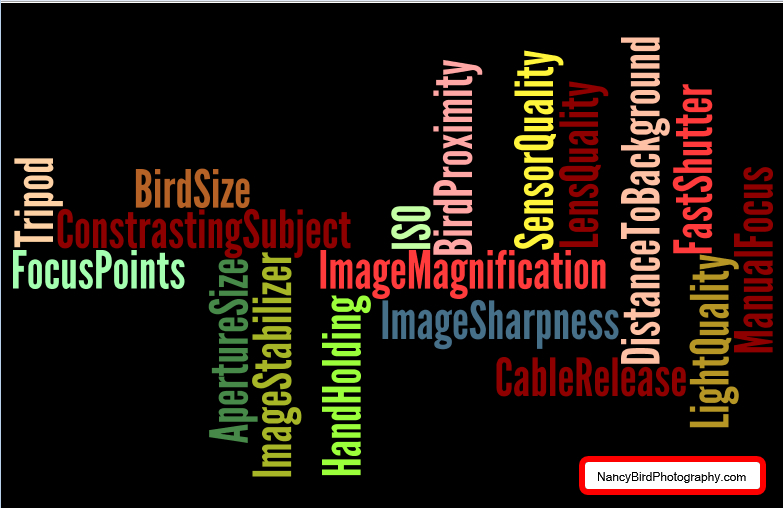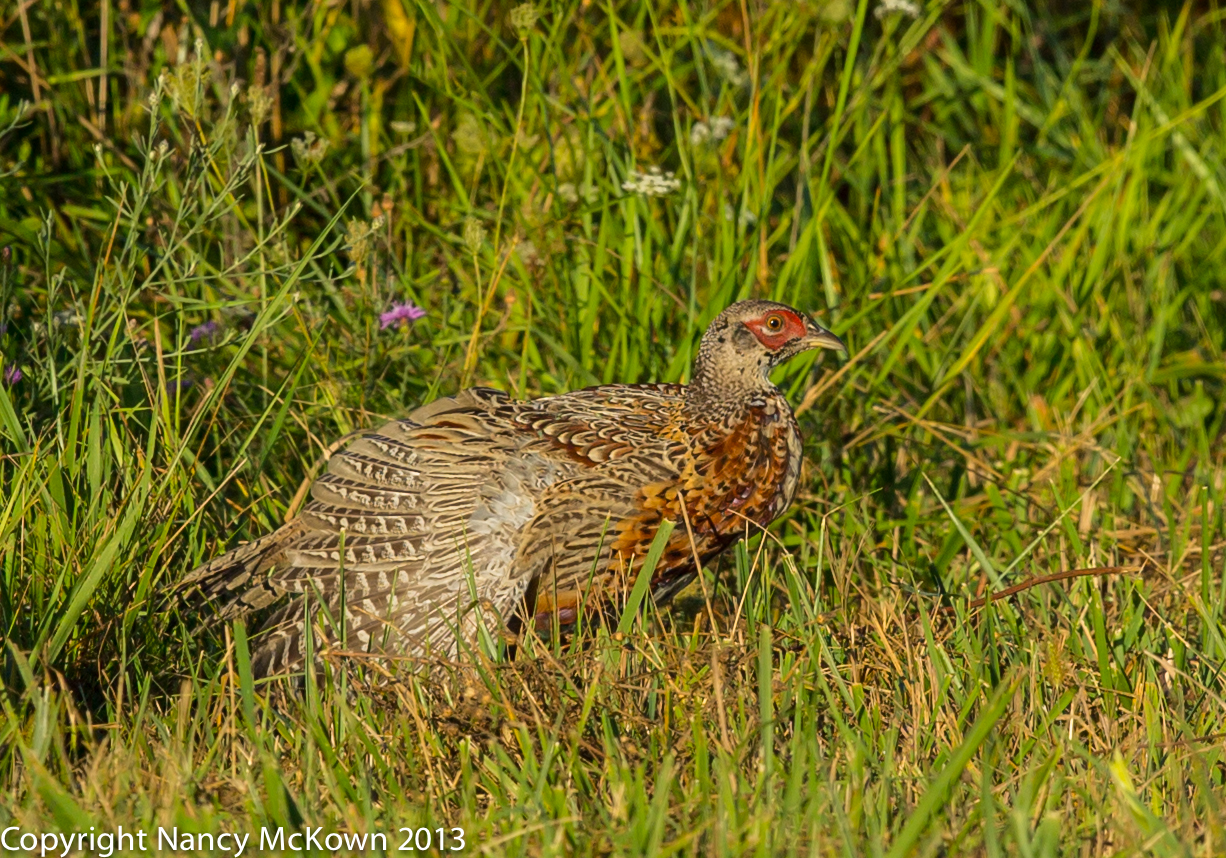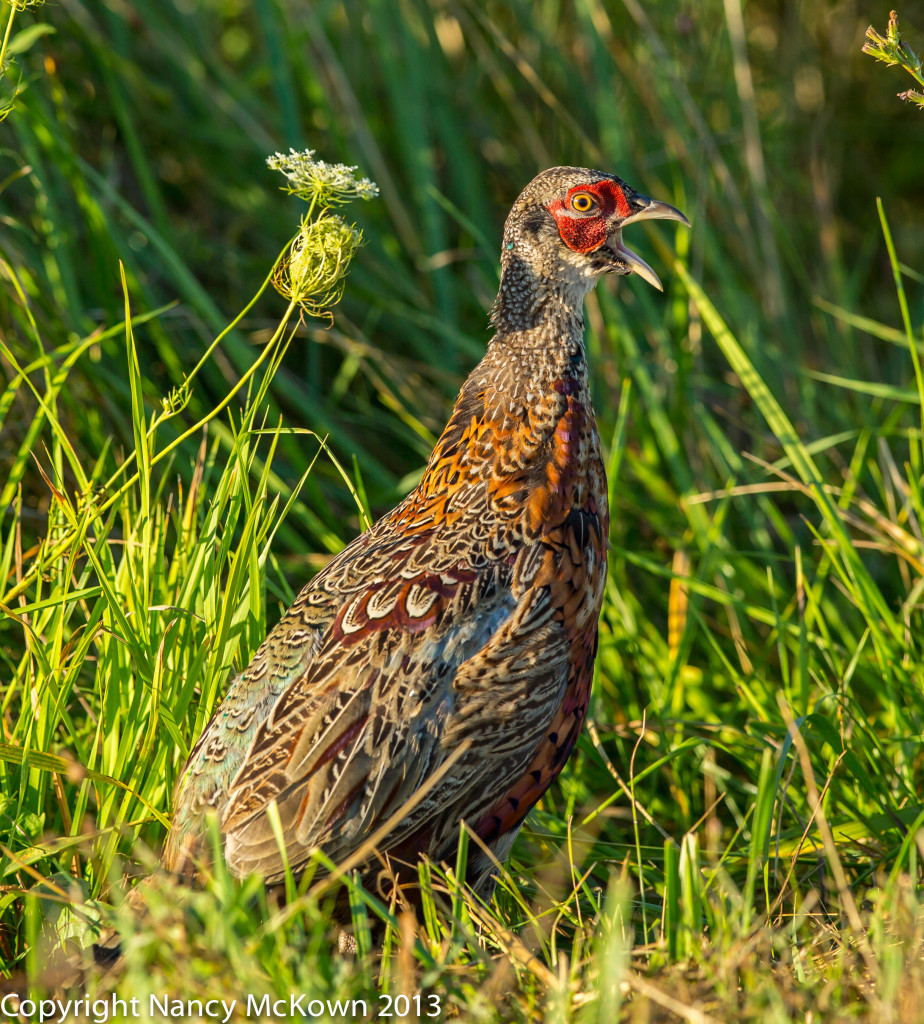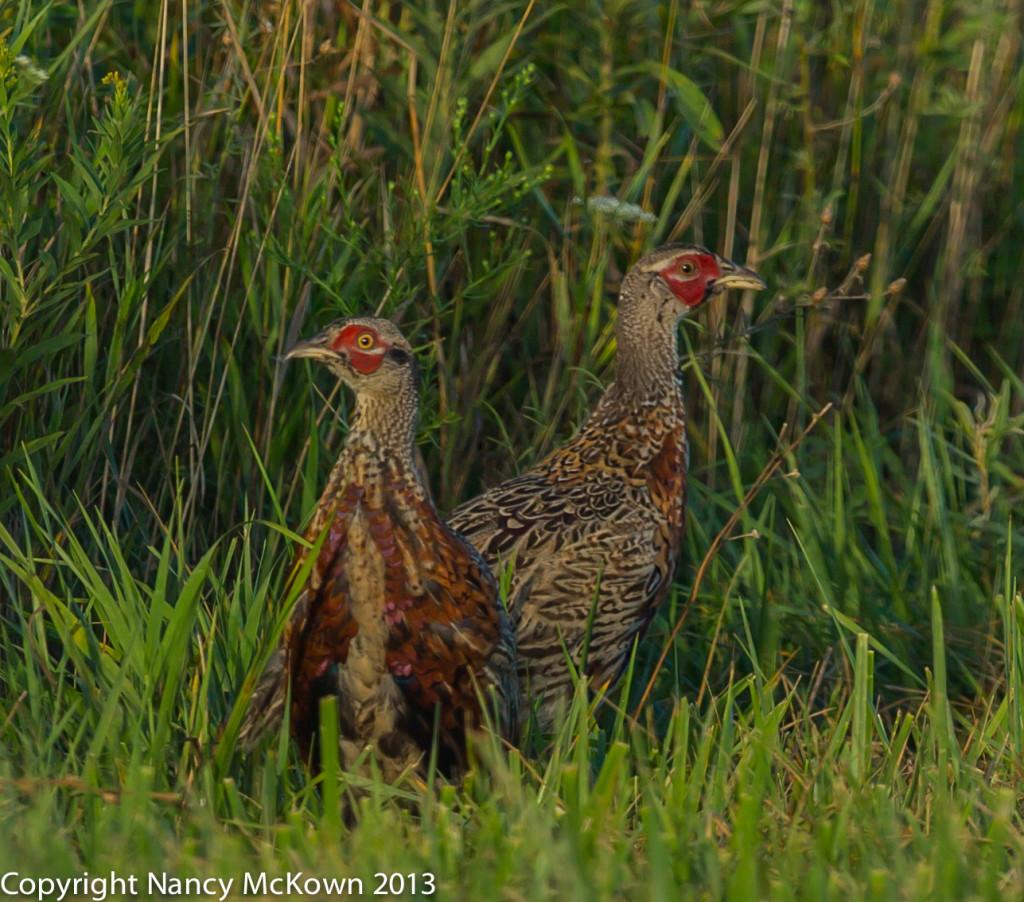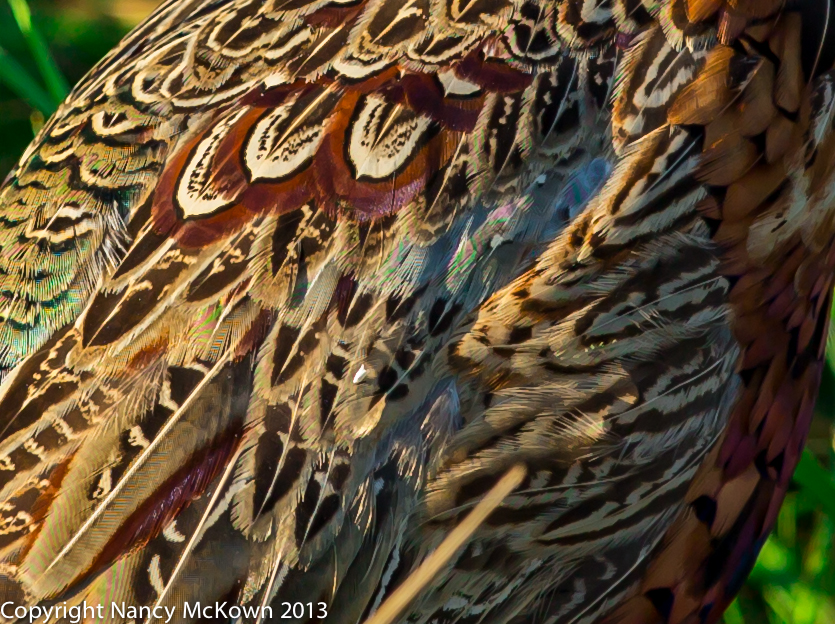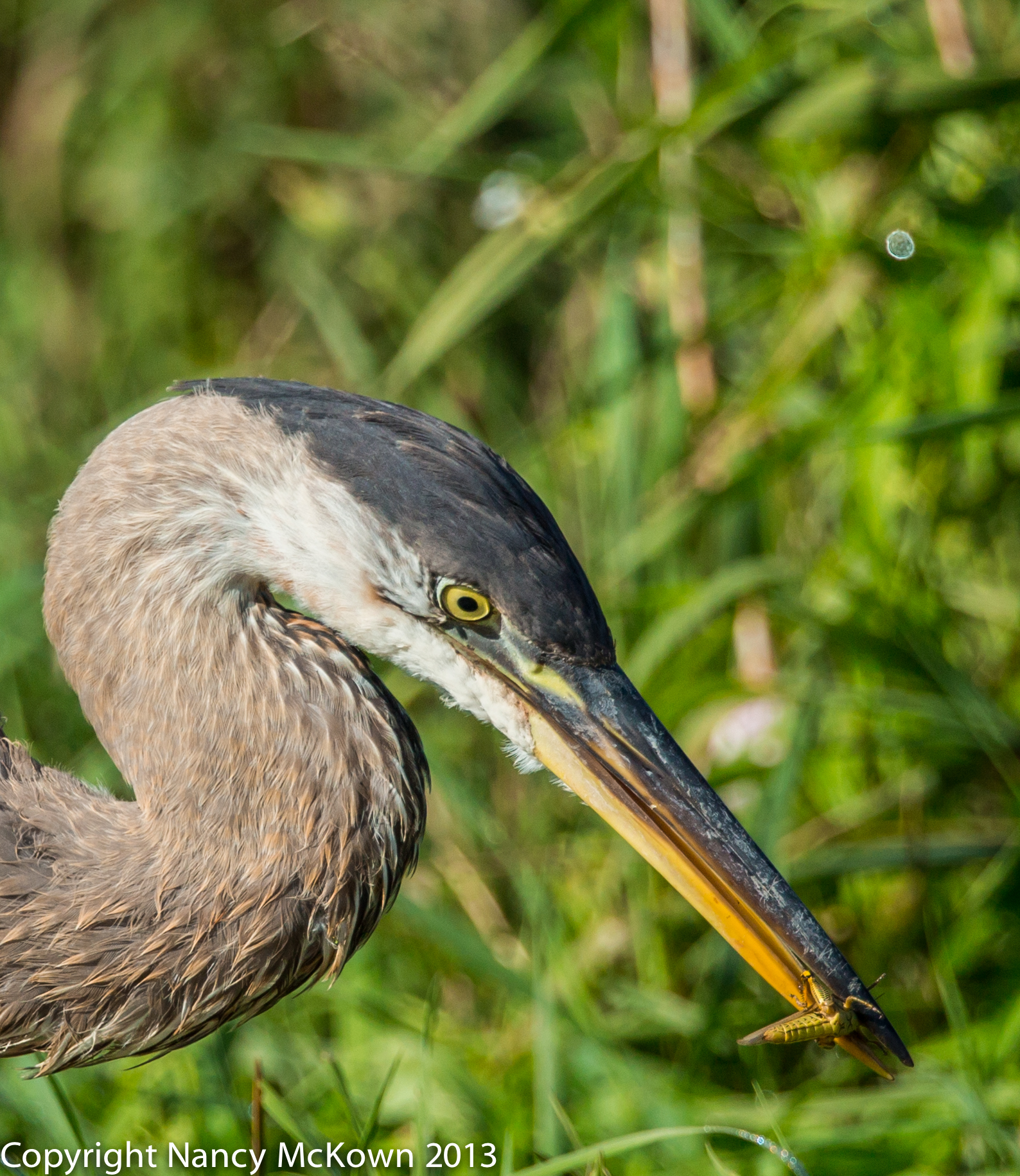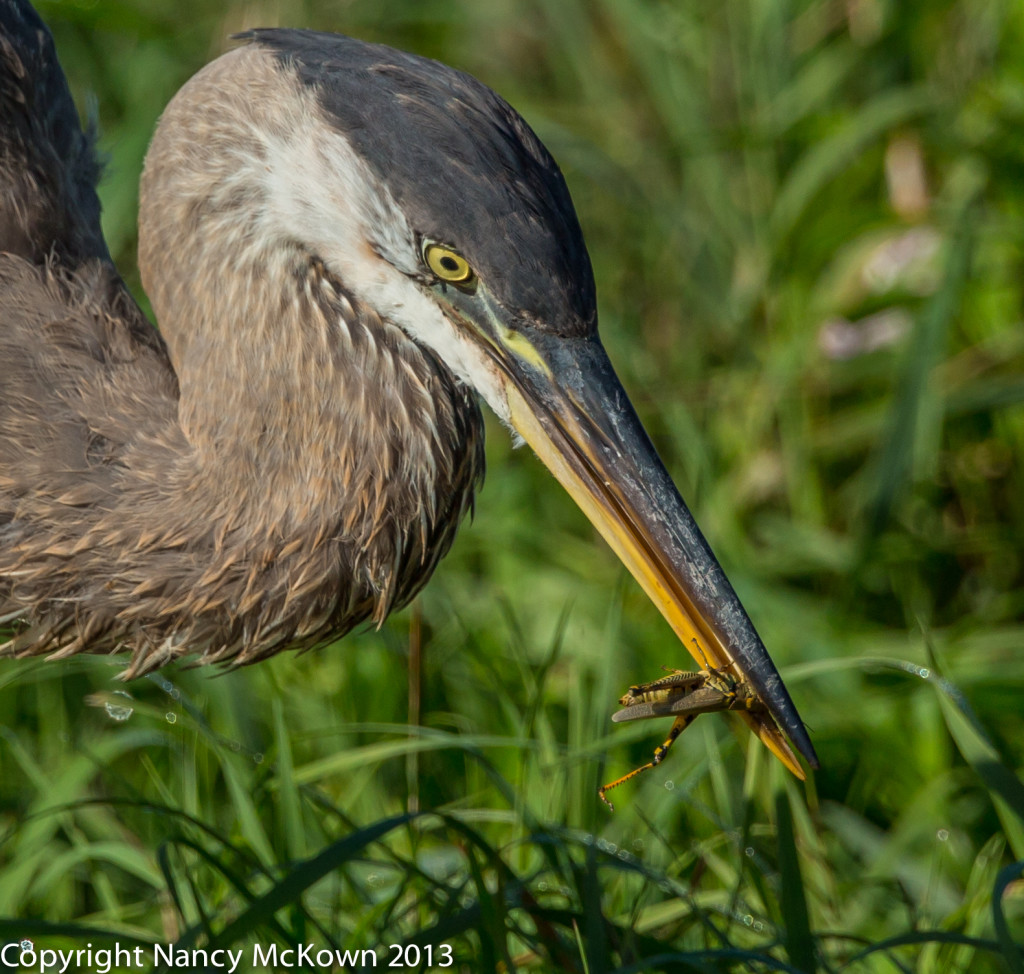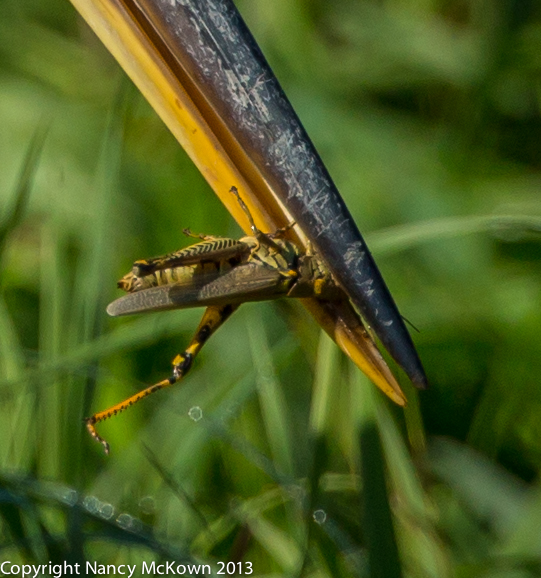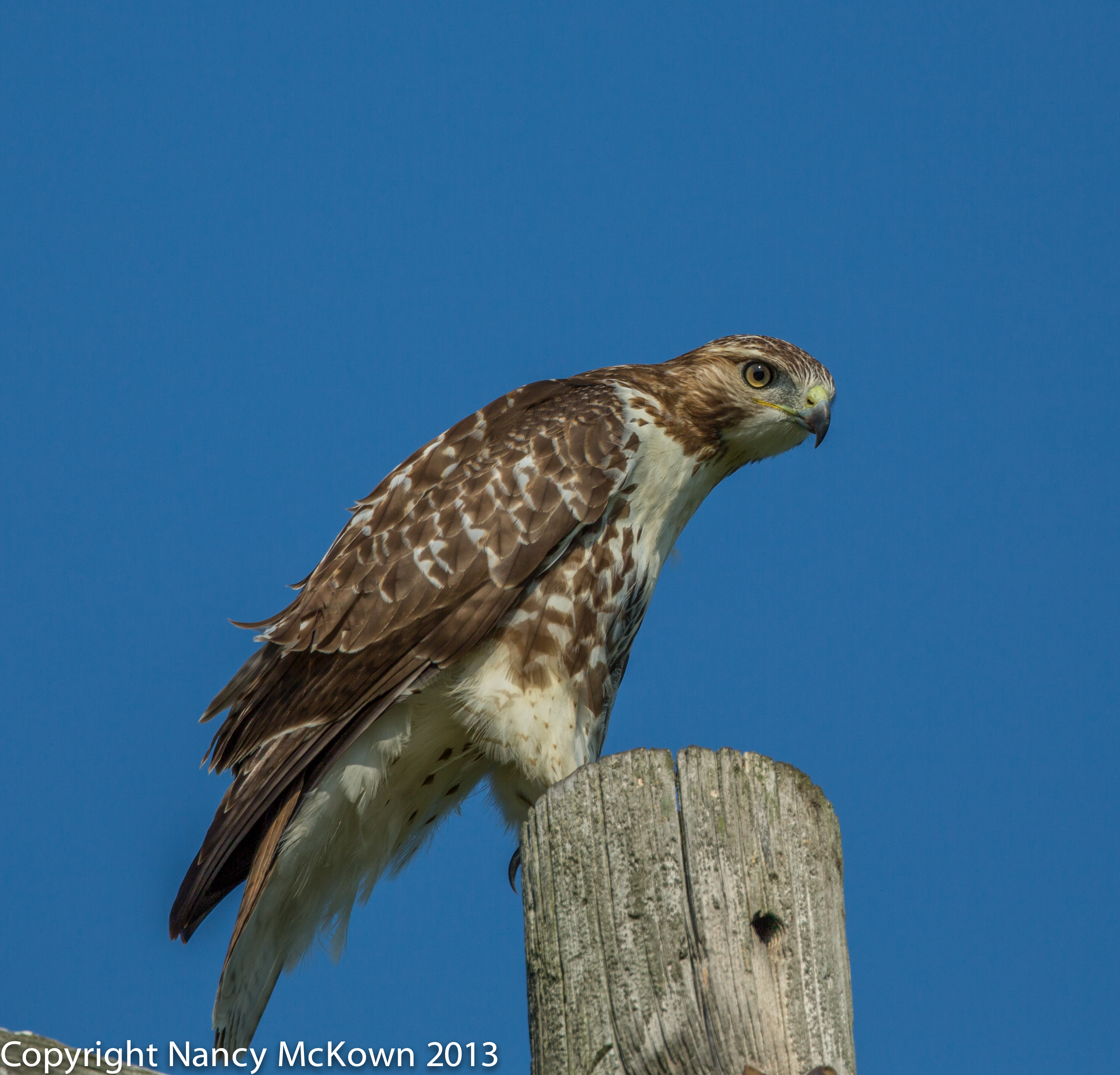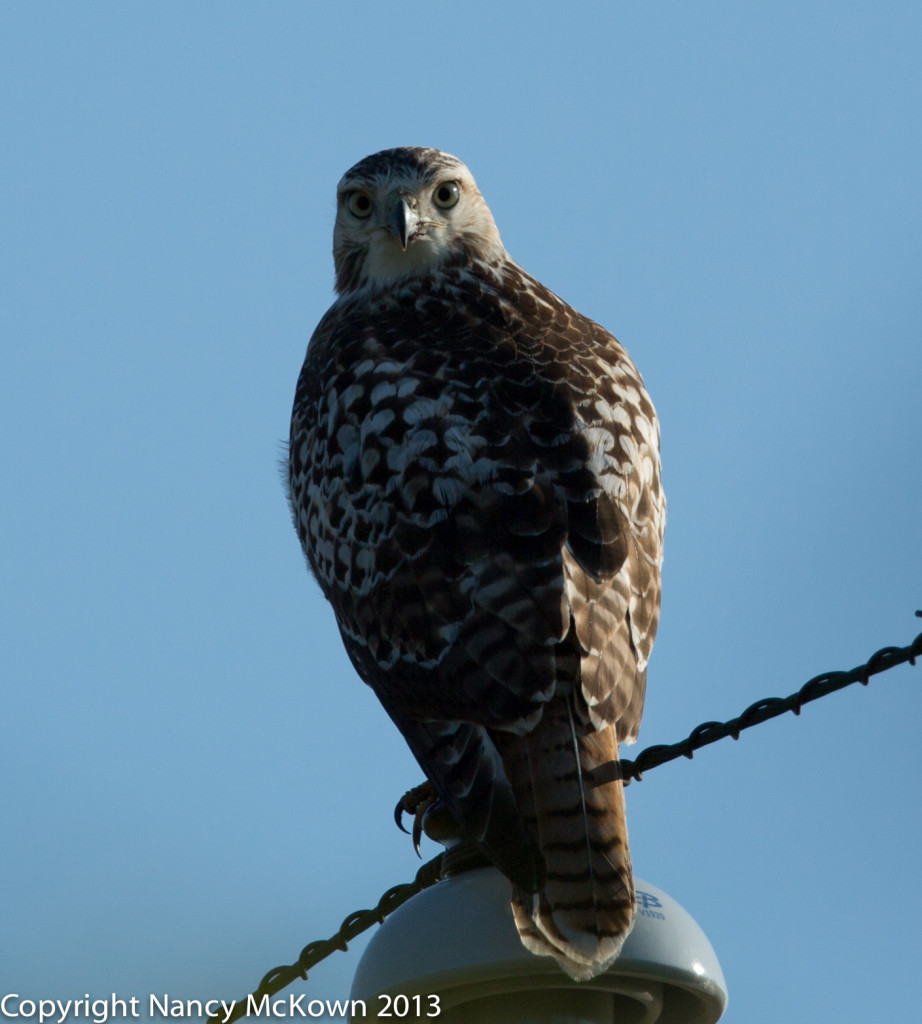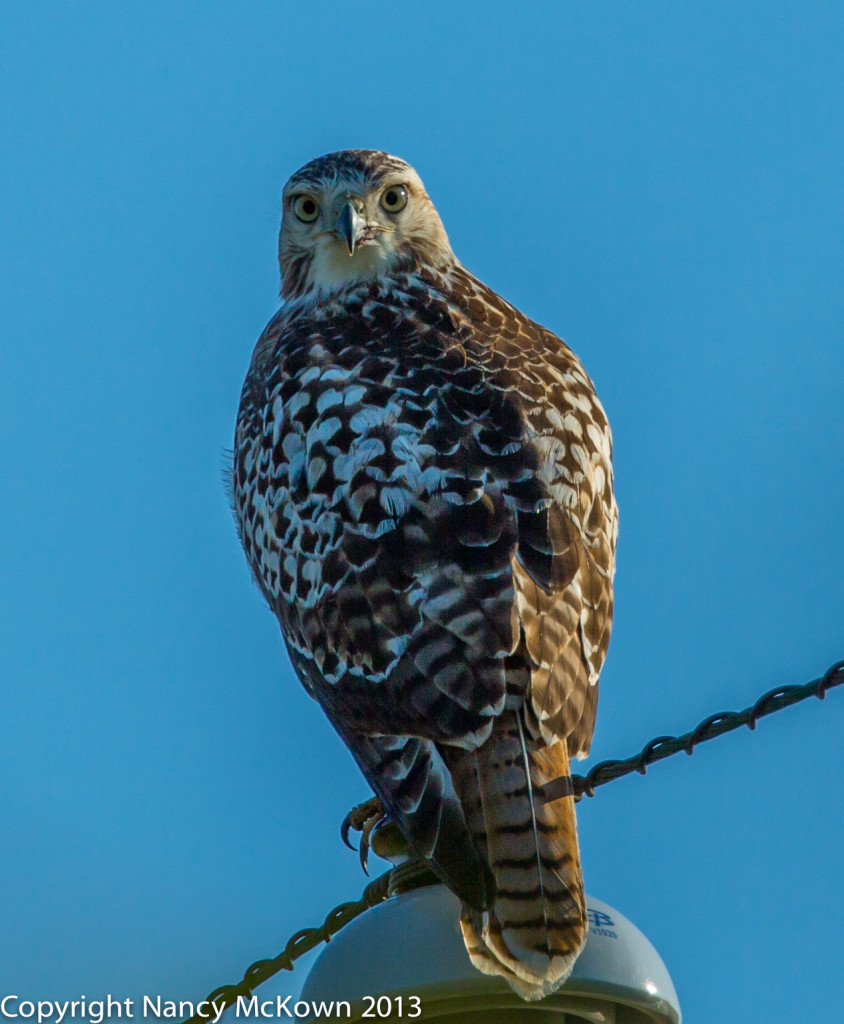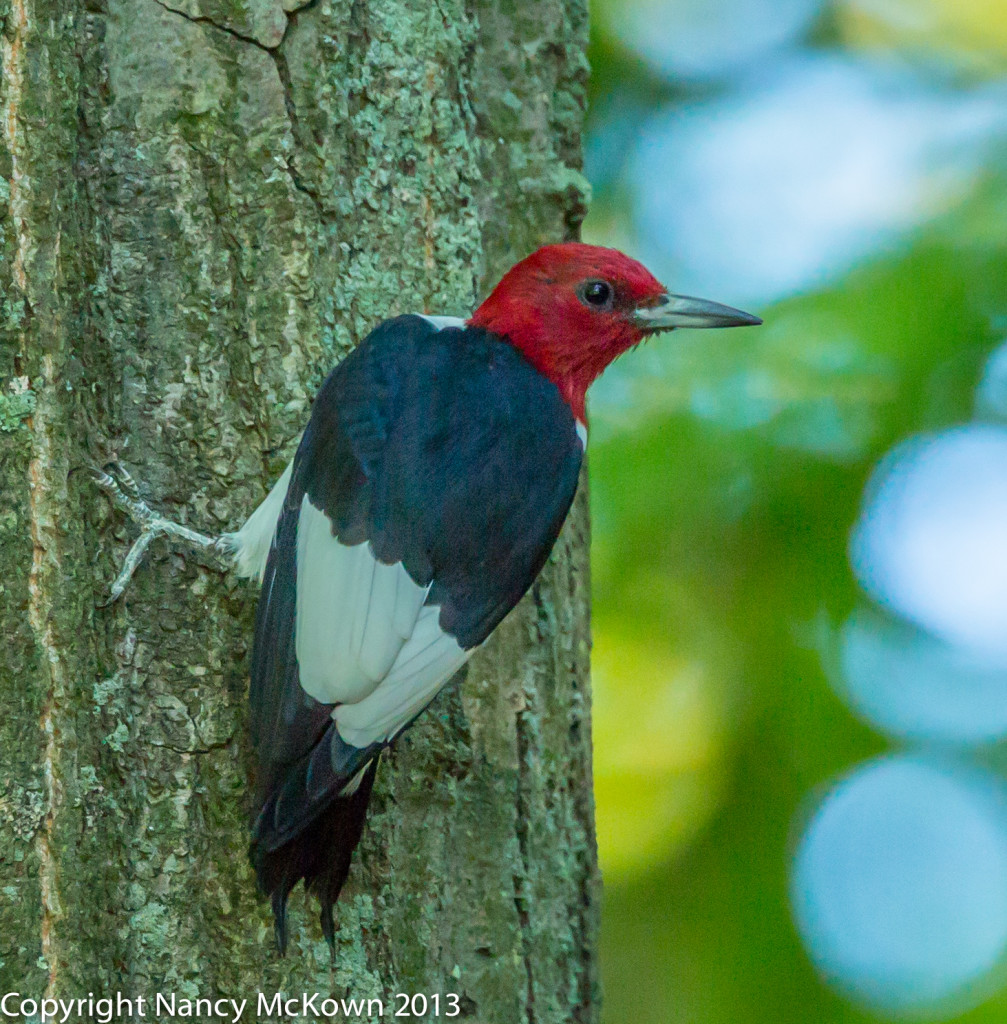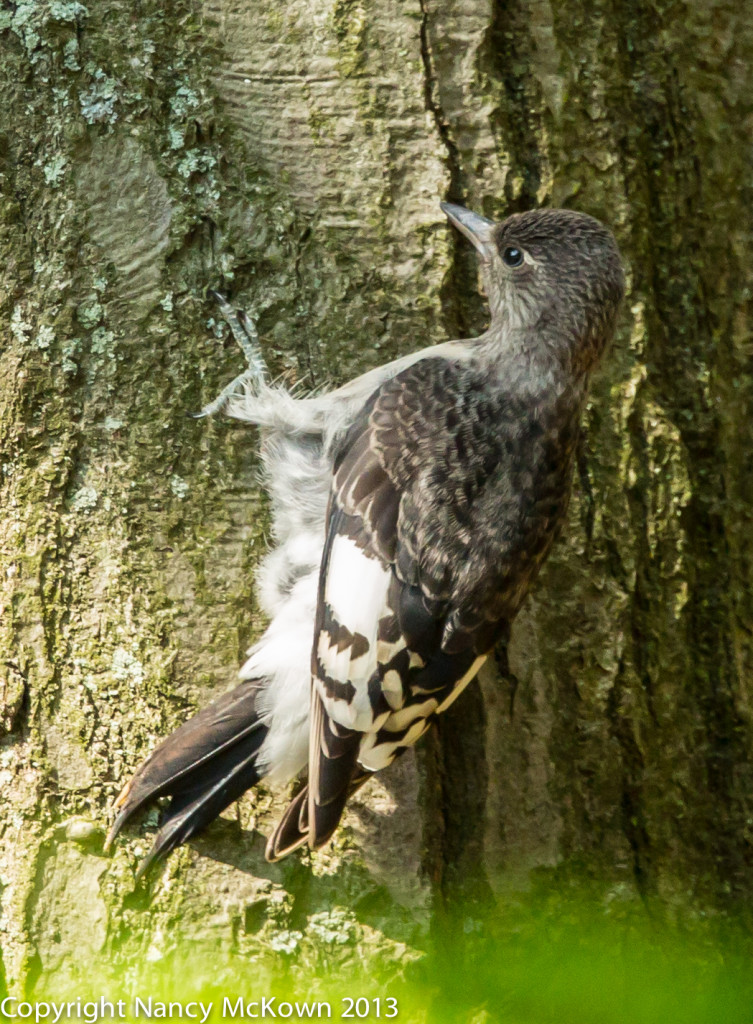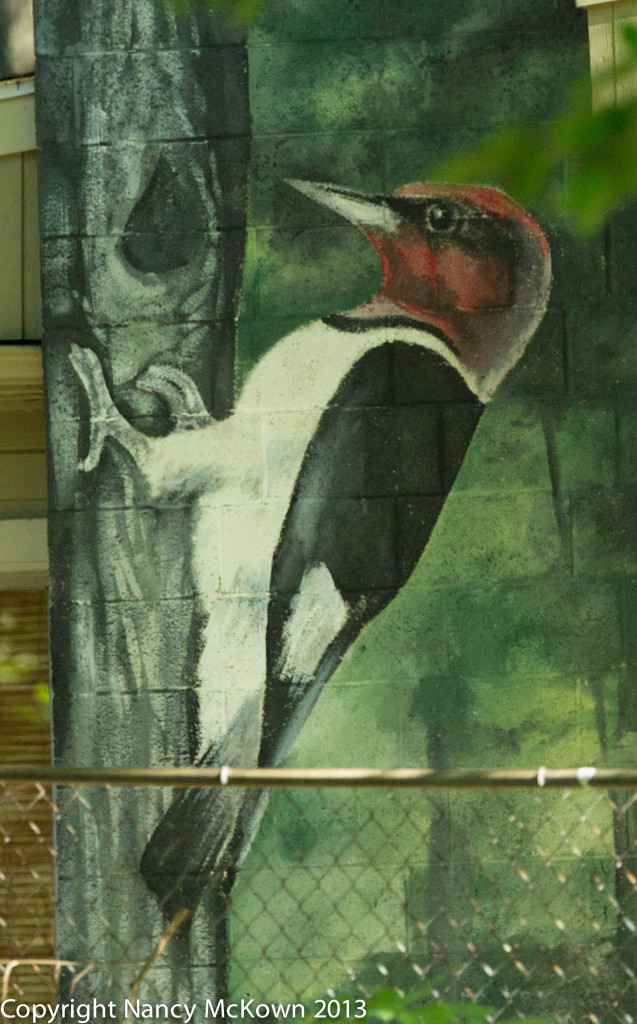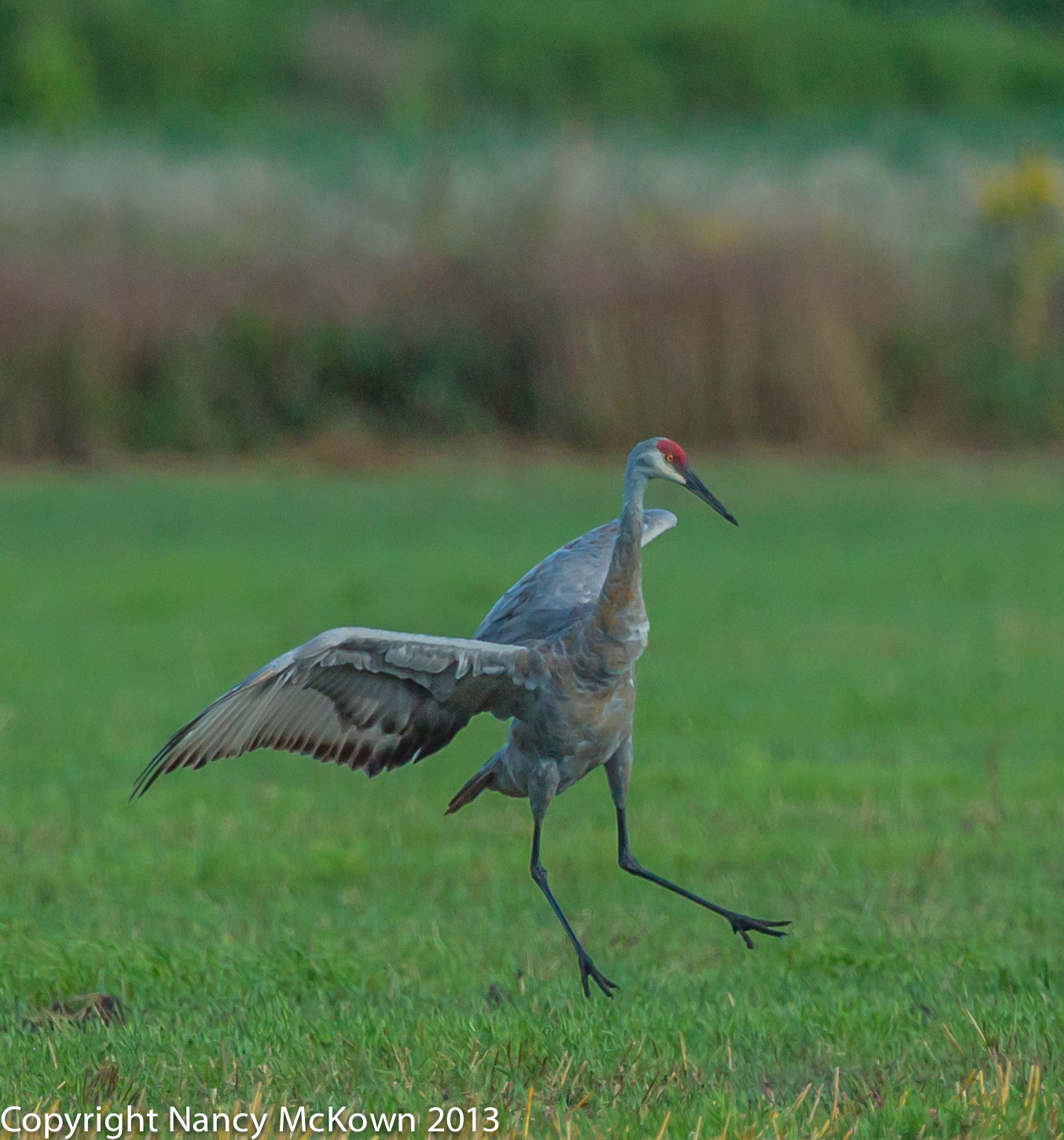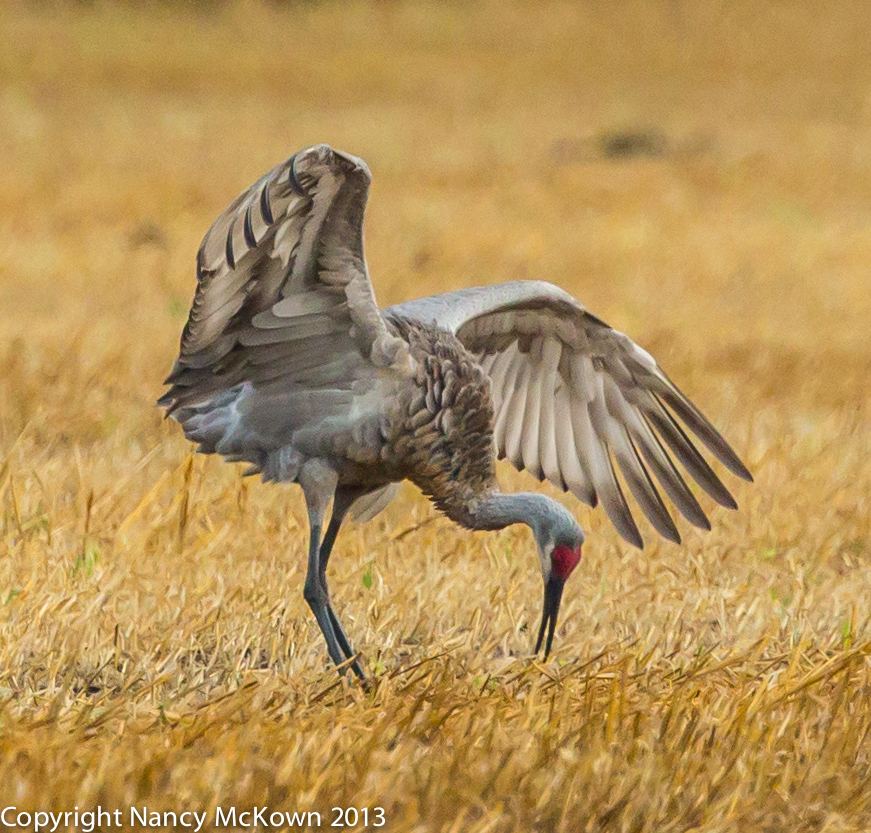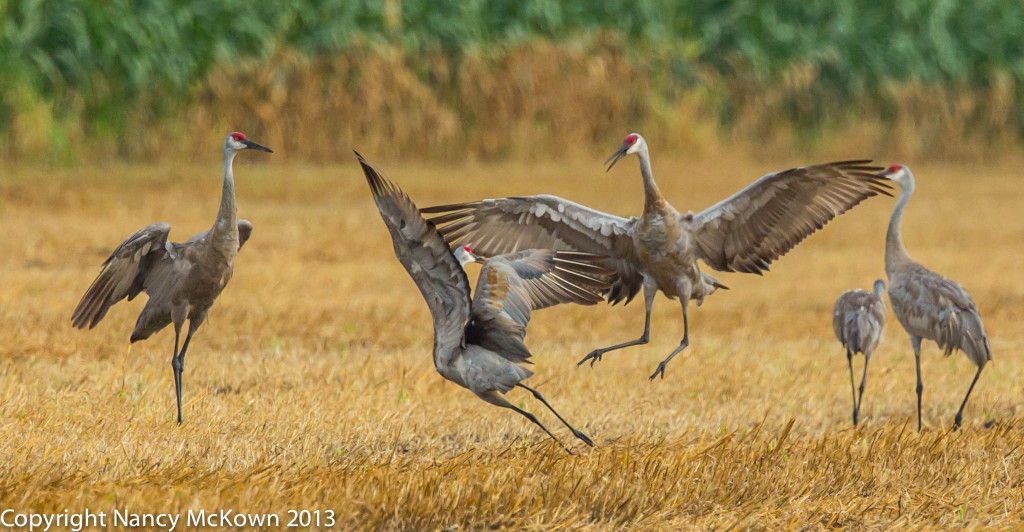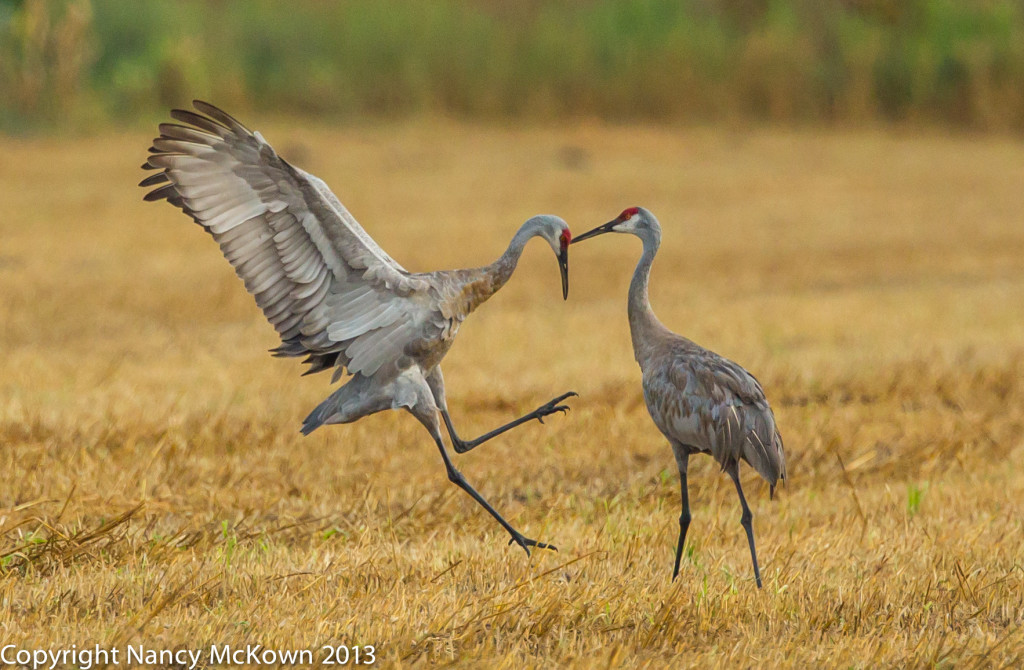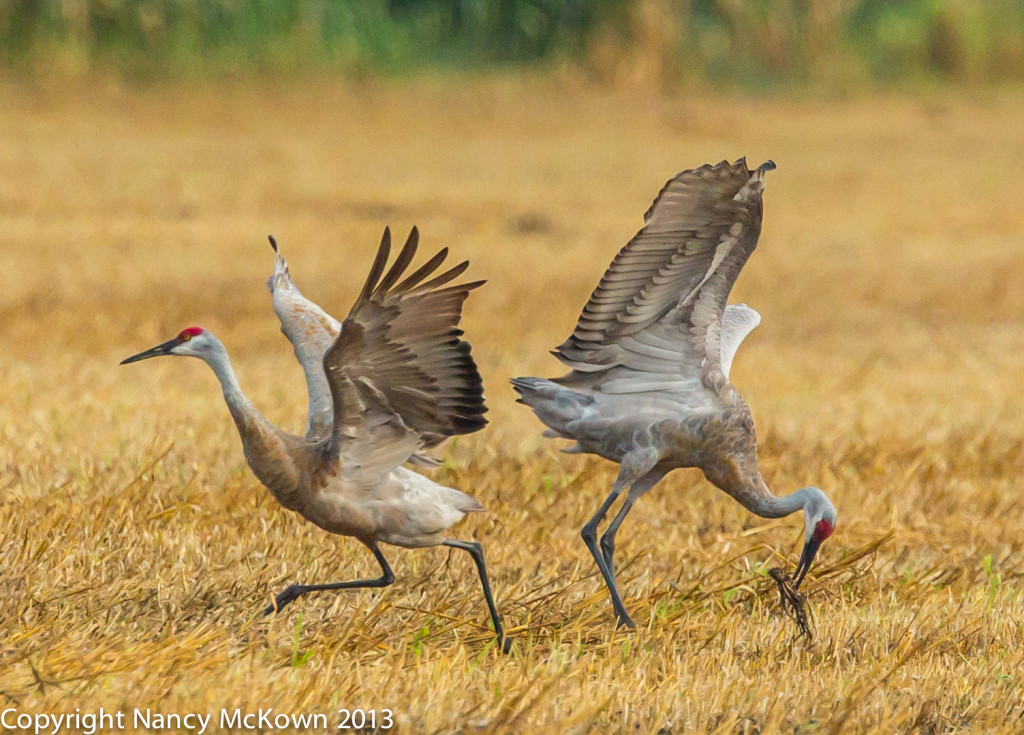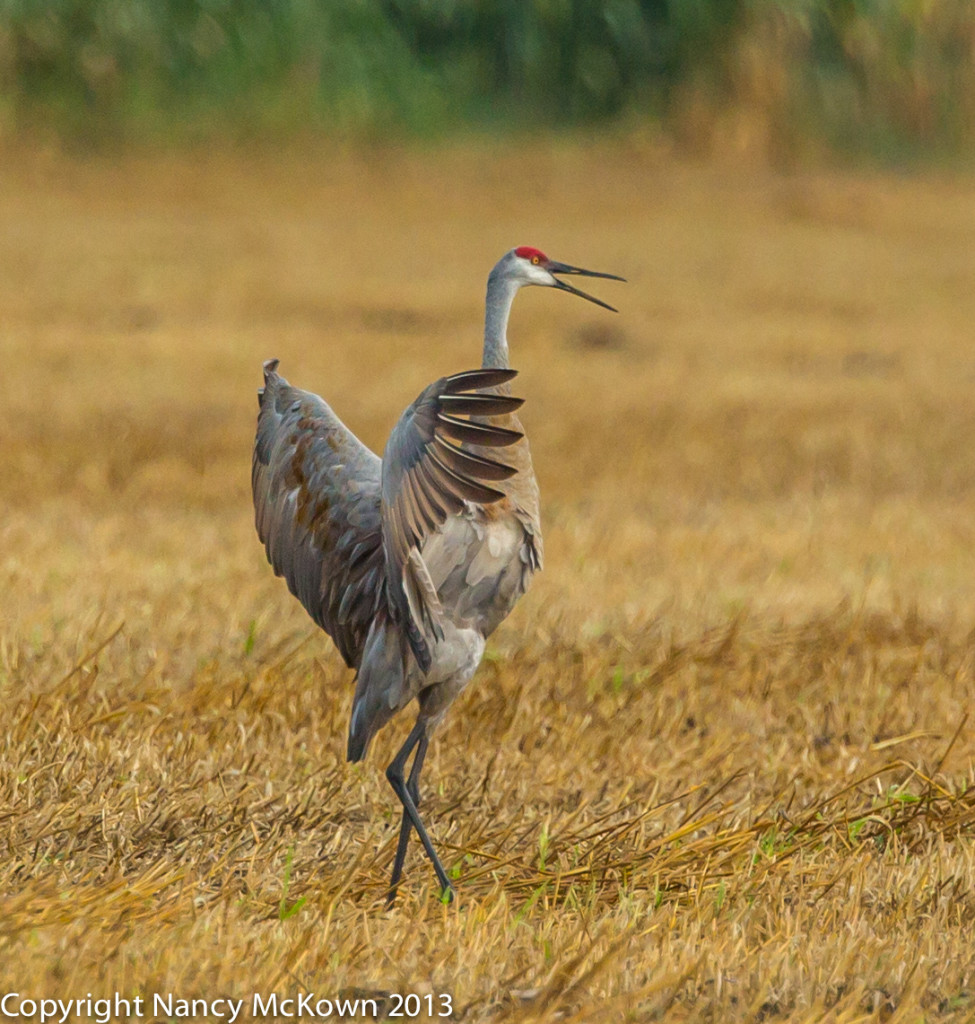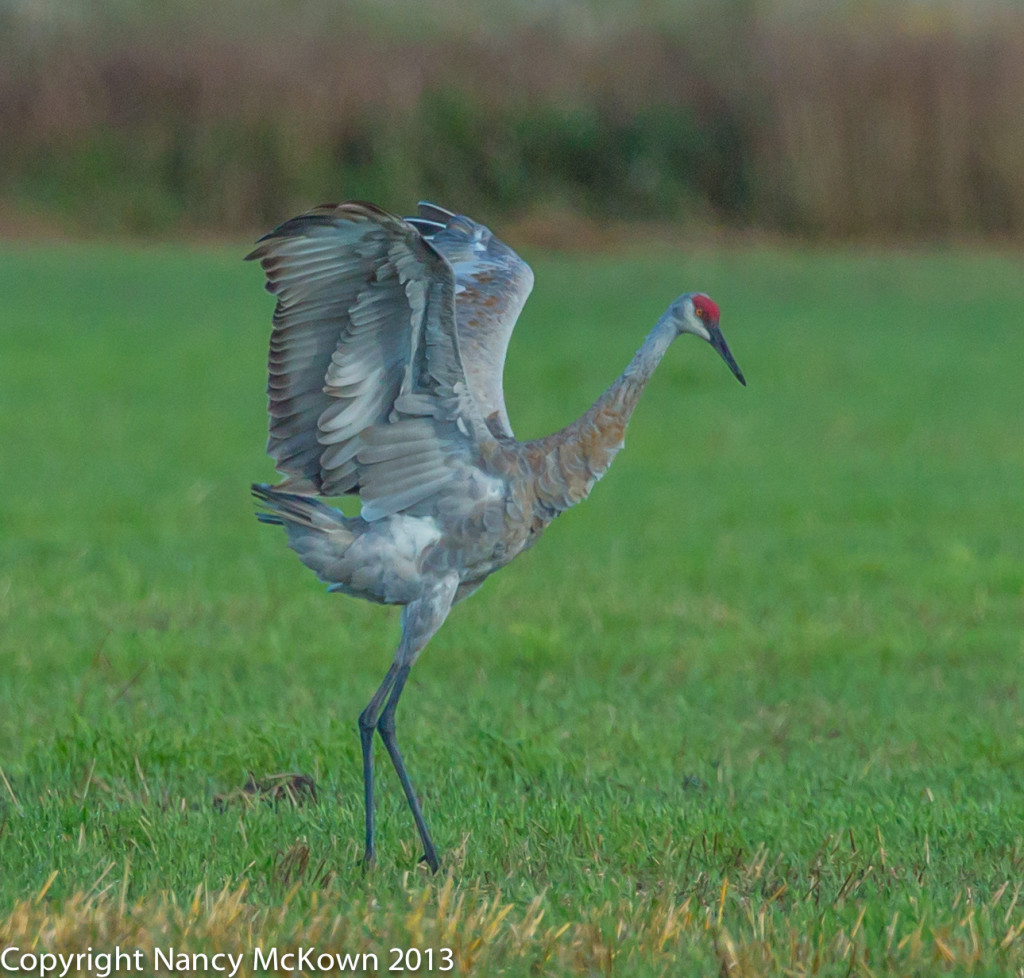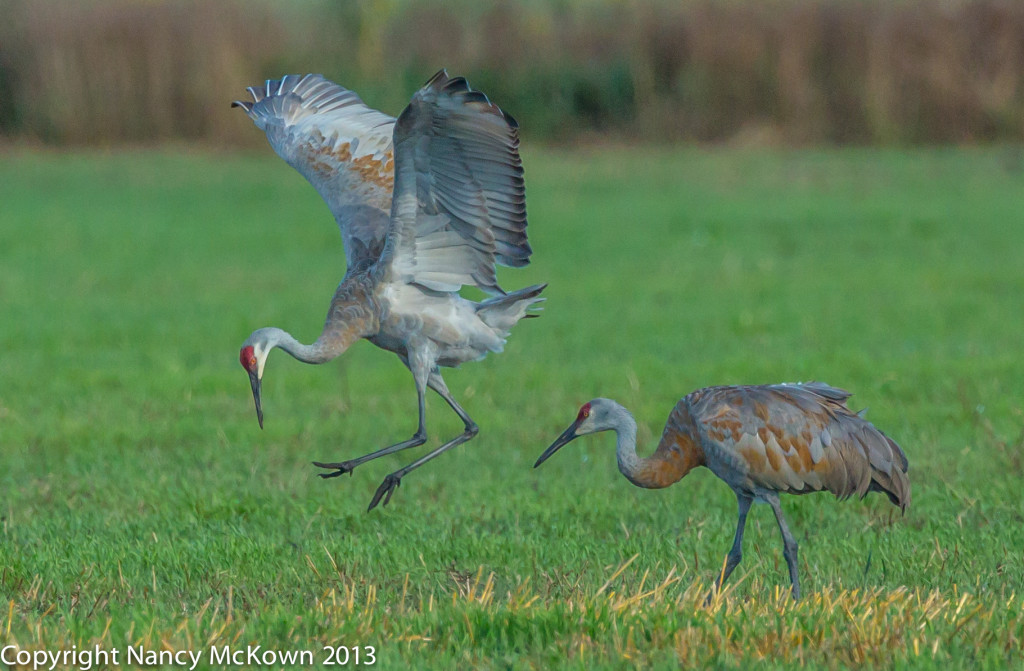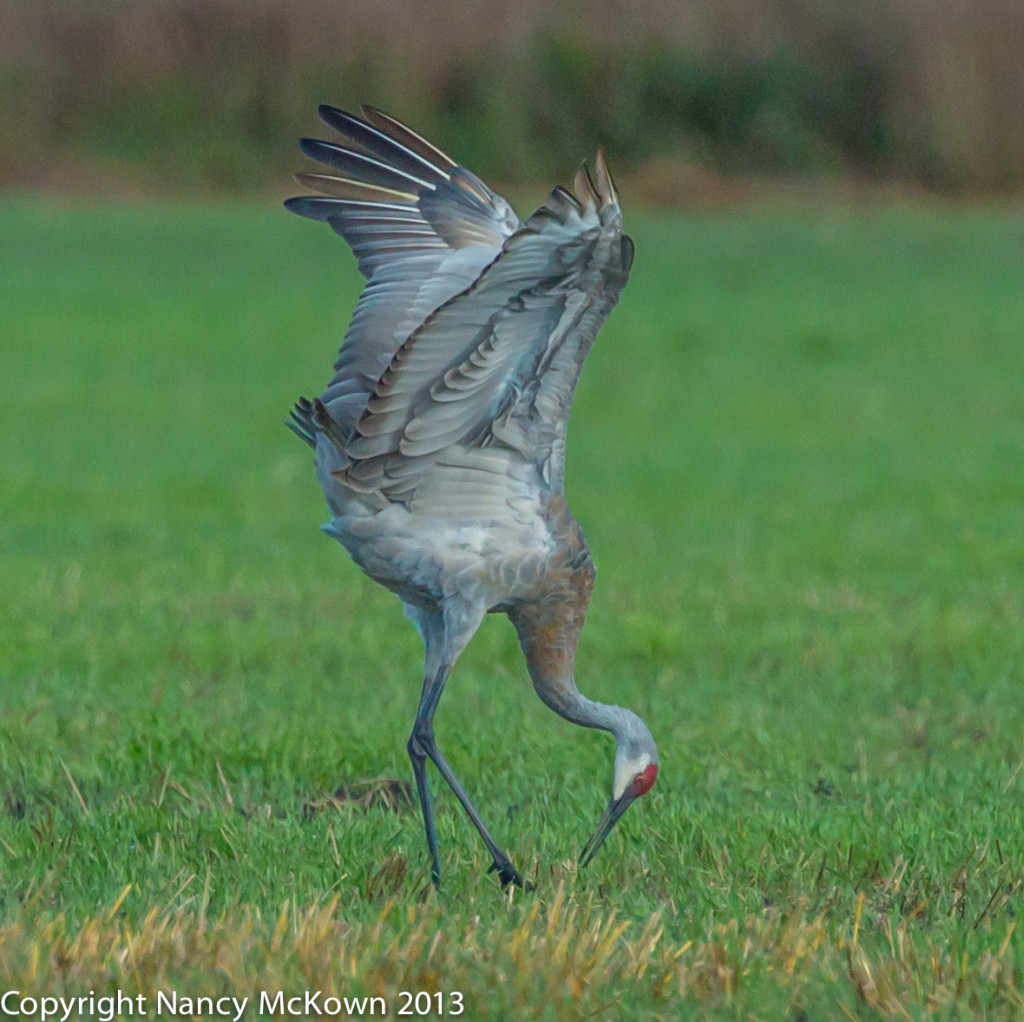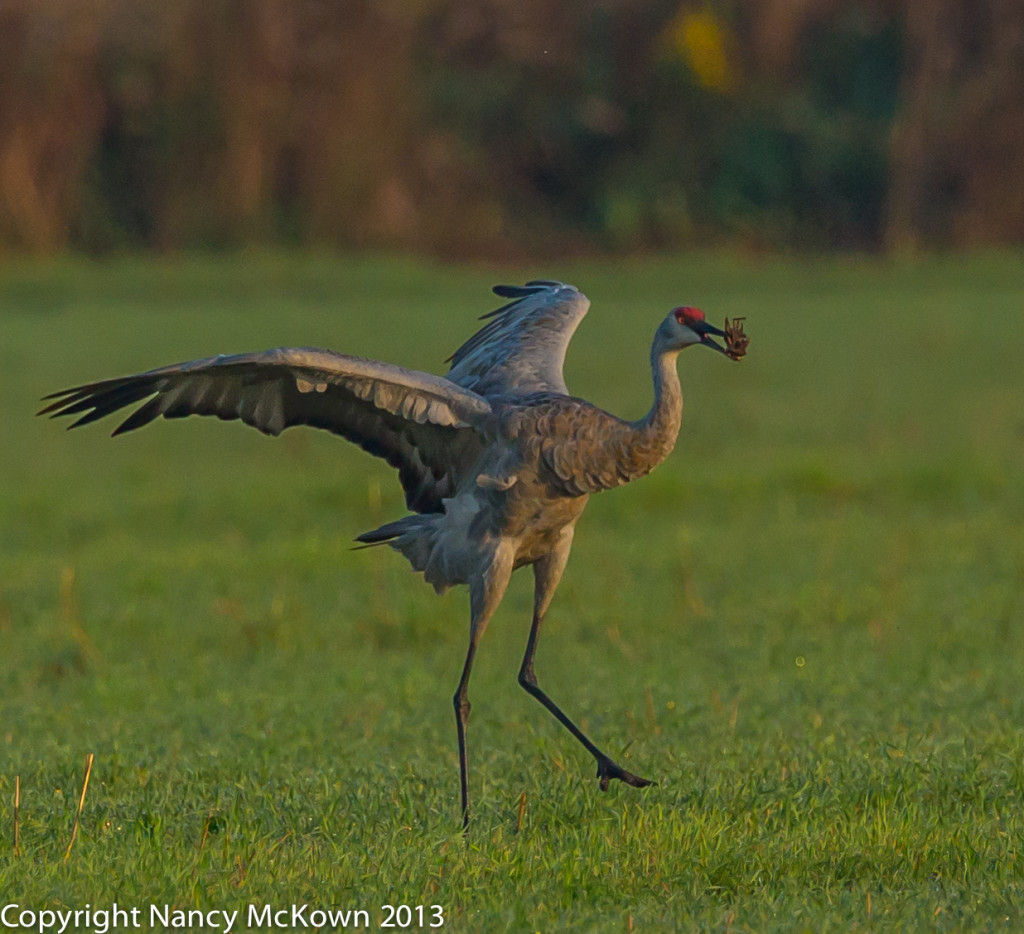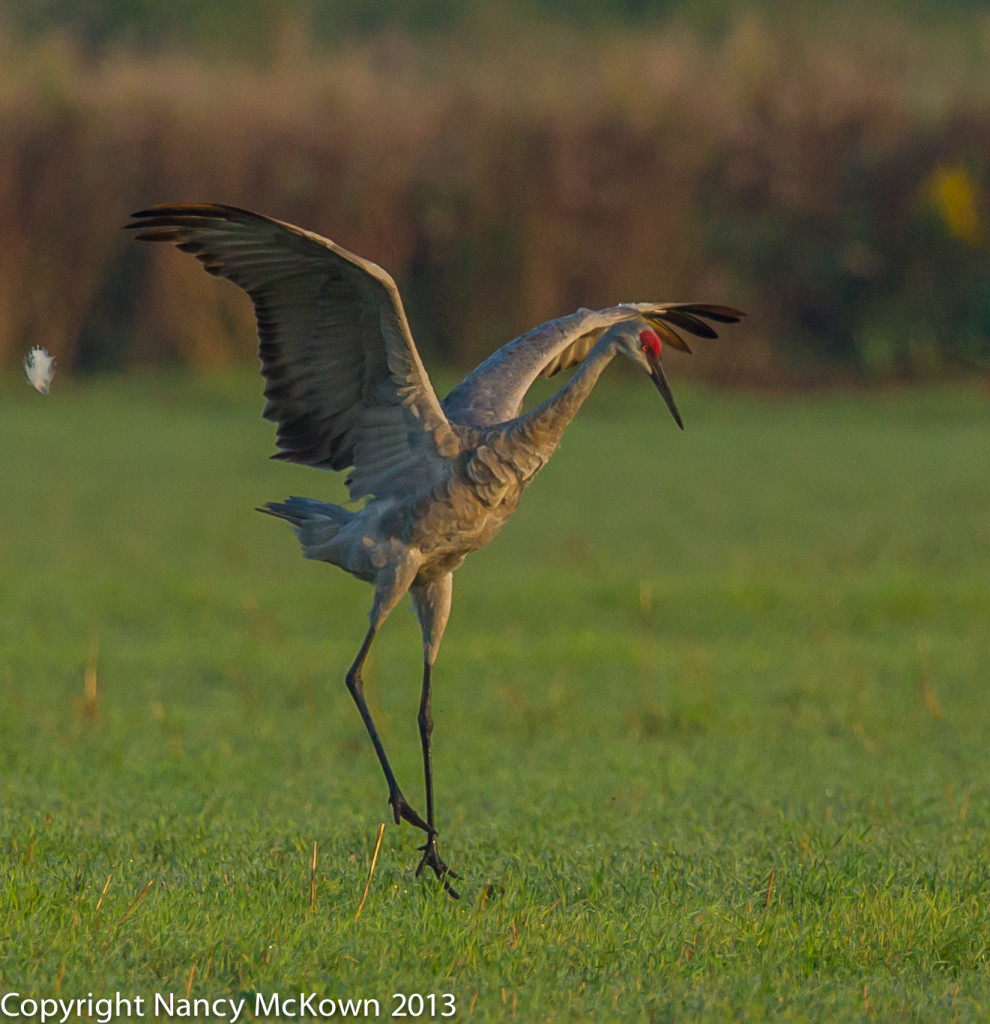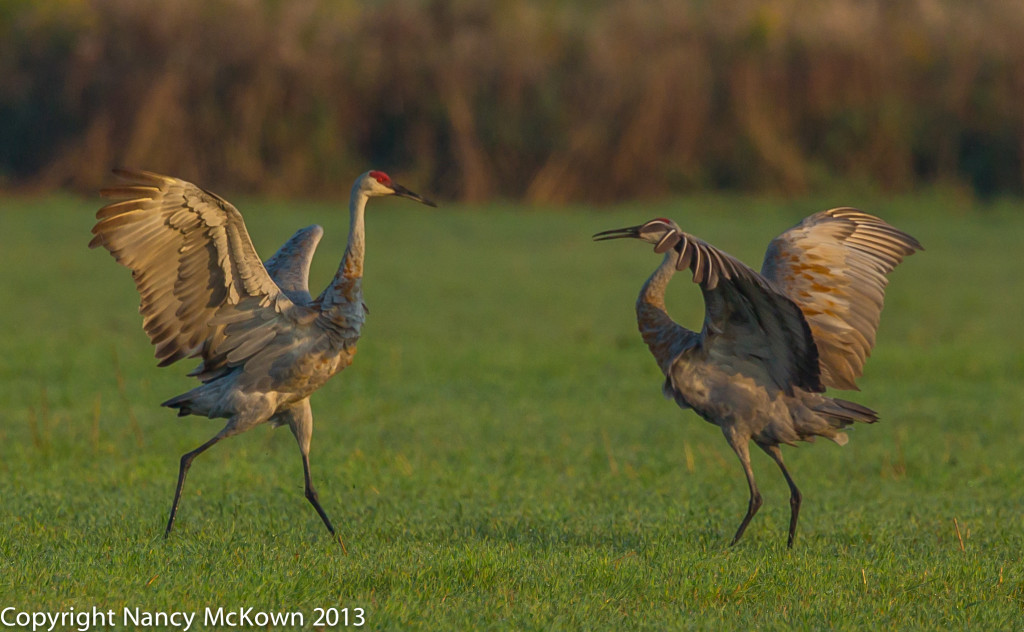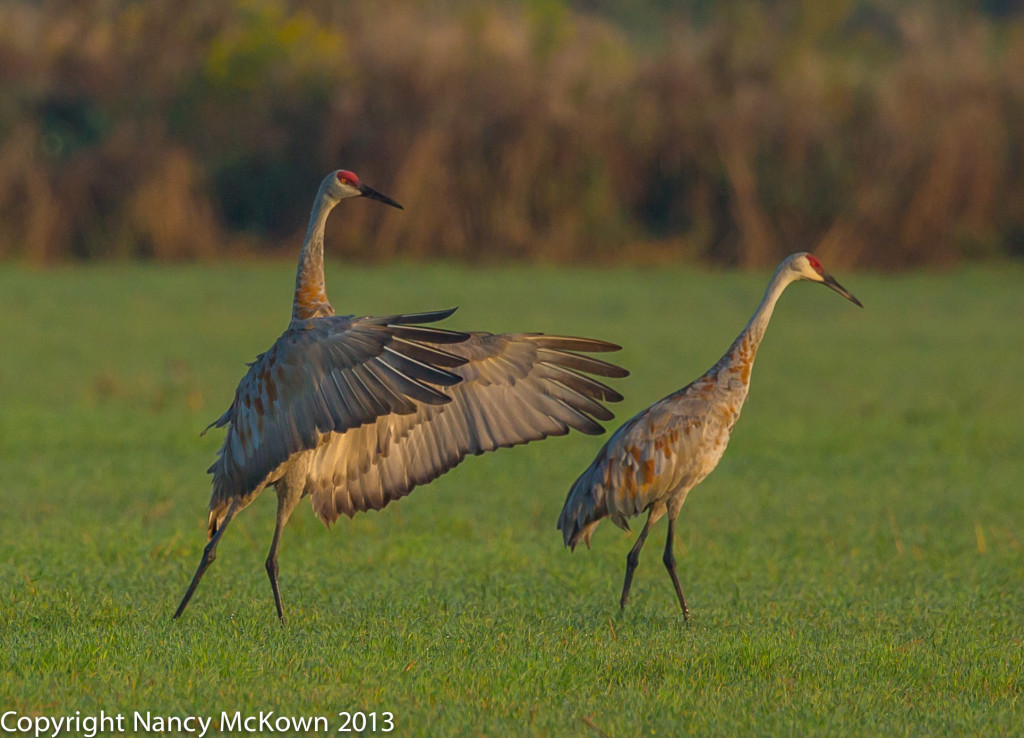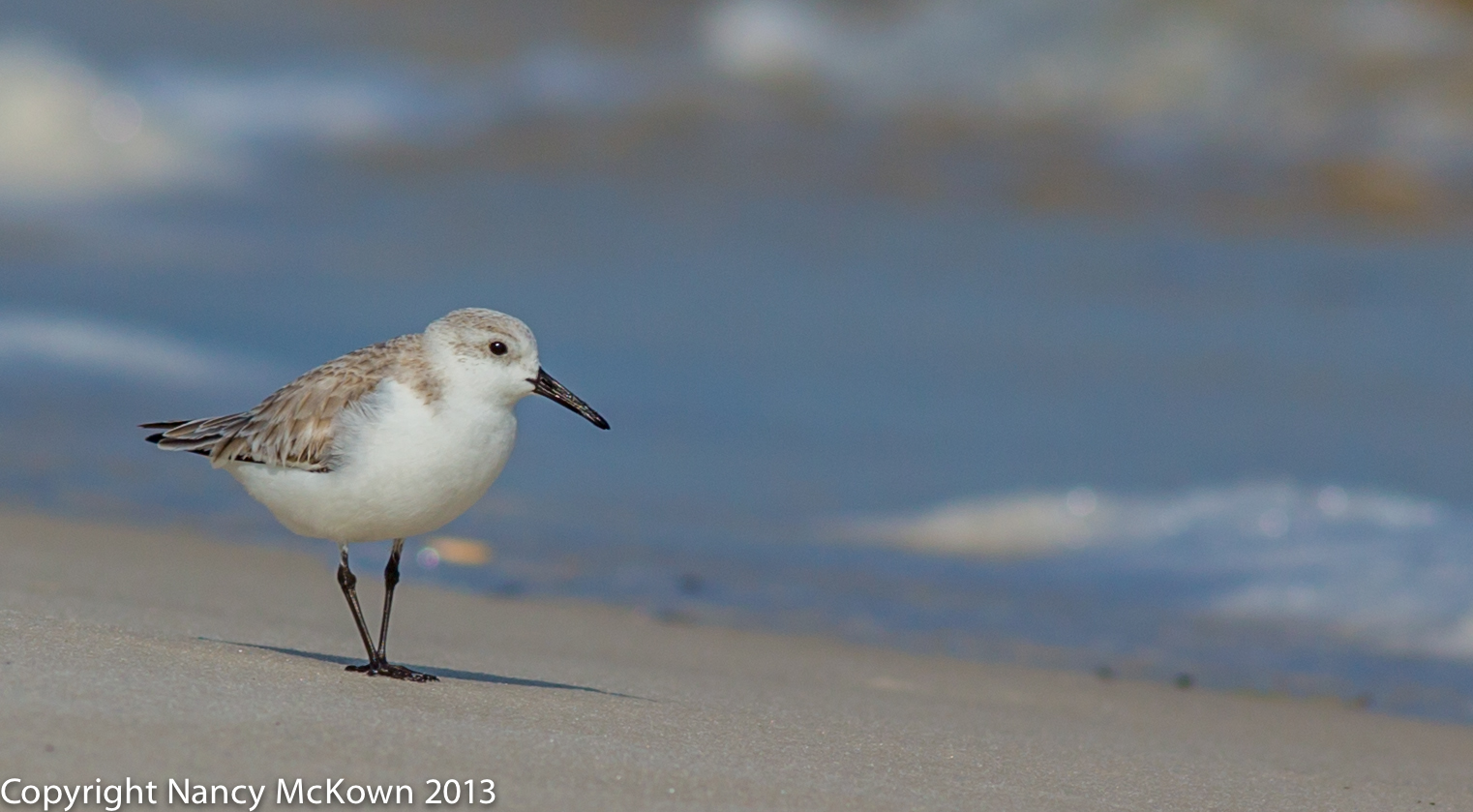Special Birding Hotspot
Bird Photographers are always looking up and around for locations upon which birds frequently perch – preferably locations that give the photographer a clear shot of a handsomely posed bird.
There are lots of “Birding Hotspot” recommendations on the web that list the best bird watching/bird photography destinations. I’ve been to a few of these, and they are very fruitful. However, I think every photographer needs to search out one special birding spot that’s close to home, not crowded with people, and guarantees a variety of visiting birds during the Spring and Fall migration seasons.
A Perch On The Dunes of Lake Michigan
One such hot spot for me is a large, long dead tree, standing strong in the dunes overlooking Lake Michigan. This tree is rather stark looking, with no leaf cover, so it’s perfect for raptors to perch upon while hunting for mammals, fish, and other birds.
I’m designating this dead tree as my hot spot for photographing raptors.
I’m lucky enough to have my neighbor’s permission to setup my equipment on her family’s beautiful deck. This deck is built into the dune, and puts me at eye level with the top most branches of the dead tree. Also, this tree is situated so I can get a fairly close shot if I happen to be on the road in my car with my camera.
So far, I have been lucky enough to photograph two raptors perched on this tree that I could not initially identify and have never photographed before.
Whatbird.com – A Valuable Bird Identification Resource
The expert birders at the WhatBird.com website (under the “Help Me Identify A Bird” tab) came to the rescue. NOTE: If you haven’t already, take a look at this informative site. In addition to being a valuable resource for bird photographers, it’s a great place to learn bird identification skills.
My two newbie raptors, perched on that long dead tree, turned out to be a Cooper’s Hawk and a Peregrine Falcon. Both of these raptors regularly hunt other birds.
Cooper’s Hawk
The Cooper’s Hawk (about the size of a crow) is an “accipiter” hawk. According to the experts, accipiter hawks have the kind of wings and tails that allow them to easily maneuver in tight spots, like wooded areas. These small hawks are also known to hunt smaller birds at bird feeders.
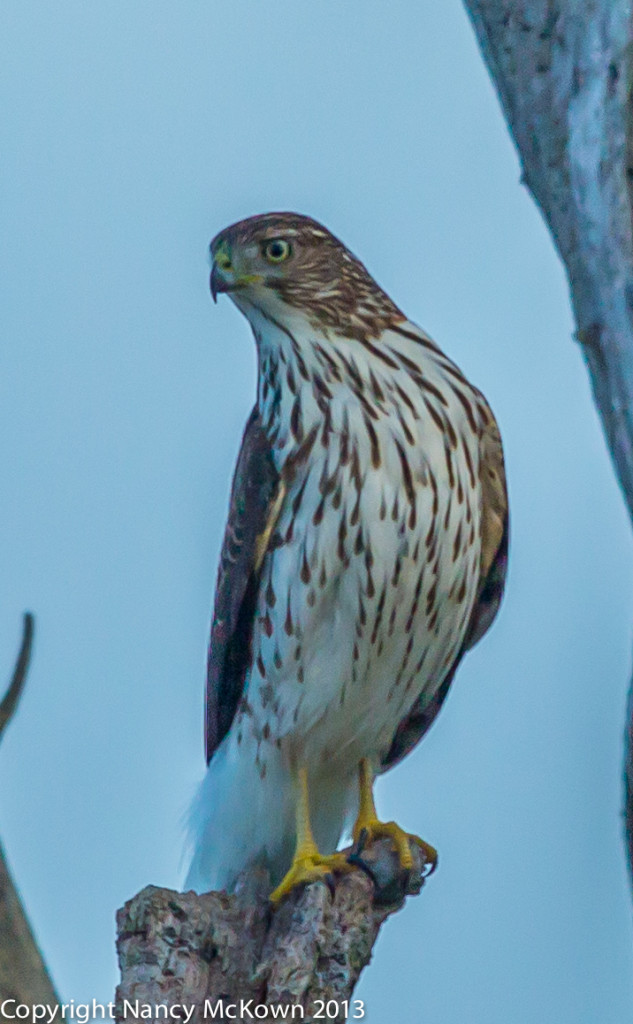
ISO 1000; 1/3200 second; f/6.3
This Cooper’s Hawk perched on the tree for less than a minute. I pressed the shutter once and he was gone. His arrival wasn’t a surprise because he was heralded in by a mob of loud crows. This particular juvenile Cooper’s hawk was being insufferably scolded, harassed and pecked by the crows. I don’t think it was my camera and me that caused him to fly off so soon.
Peregrine Falcon
The second surprise visitor to my hotspot was a Peregrine Falcon. I was driving down Lakeshore Drive when I notice her on my hotspot. I stopped the car and shot this image from my car window. Peregrines are about the same size as Cooper’s Hawks – anywhere from 15″-20″ long, head to tail.
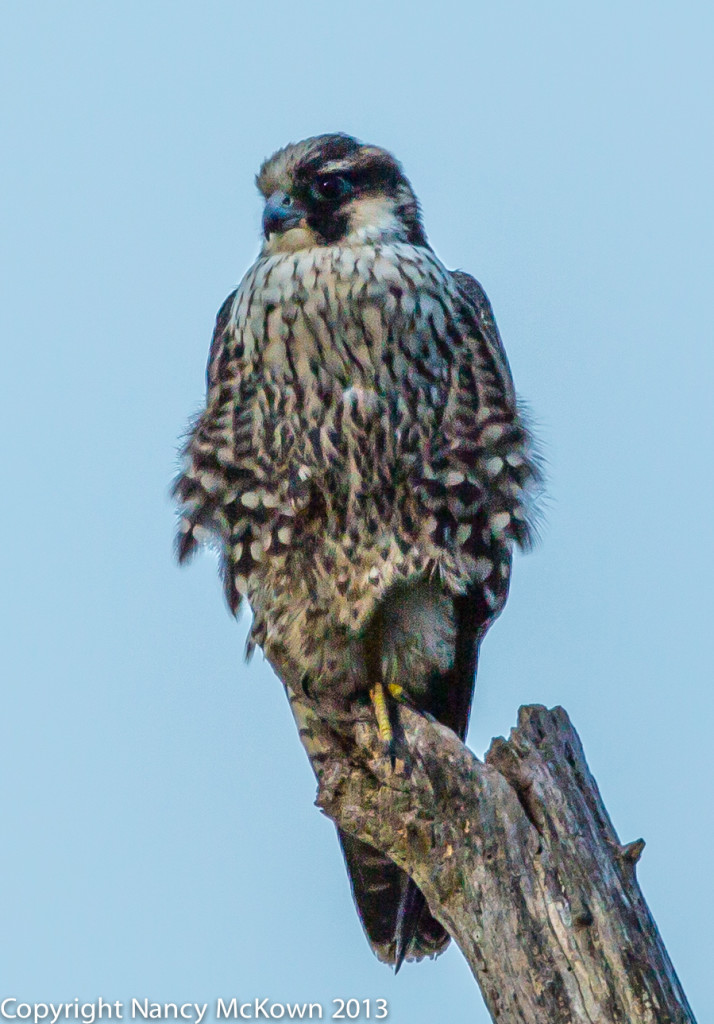
ISO 250; 1/2500 Second; f/5.6
Peregrine Means Wanderer
In an effort to help restore the population of this raptor, peregrine falcons have been “transplanted” in a lot of different cities. They perch on tall buildings, nest on the building’s ledges and feed on doves, blackbirds, jays, pigeons and starlings.
This Peregrine was most likely migrating south along the Lake Michigan shoreline. Crows were also mobbing this much faster, more powerful, mid-air hunter of other birds. Sadly, the peregrine falcon did not stick around for me to get more than one or two shots.
Mobbing Crows
Crows are known for their intelligence and curiosity. Makes me wonder why they harass raptors that specialize in eating other birds. Certainly makes it more exciting. I’m hoping that the crows haven’t also designated this dead tree on the dune as their raptor hotspot.
